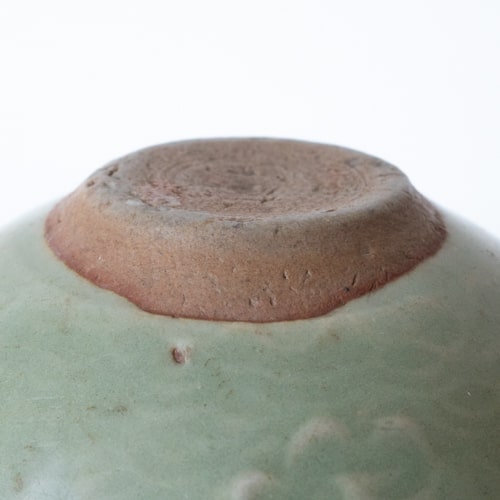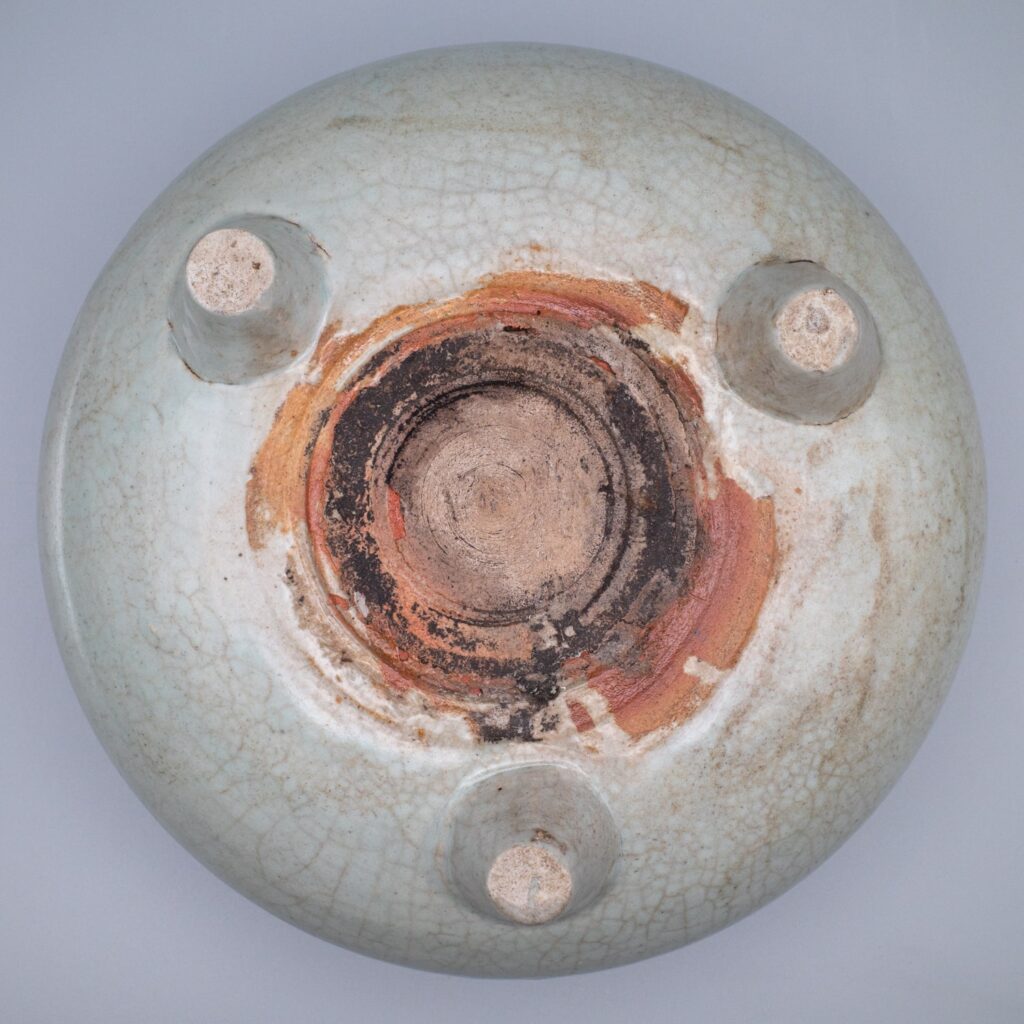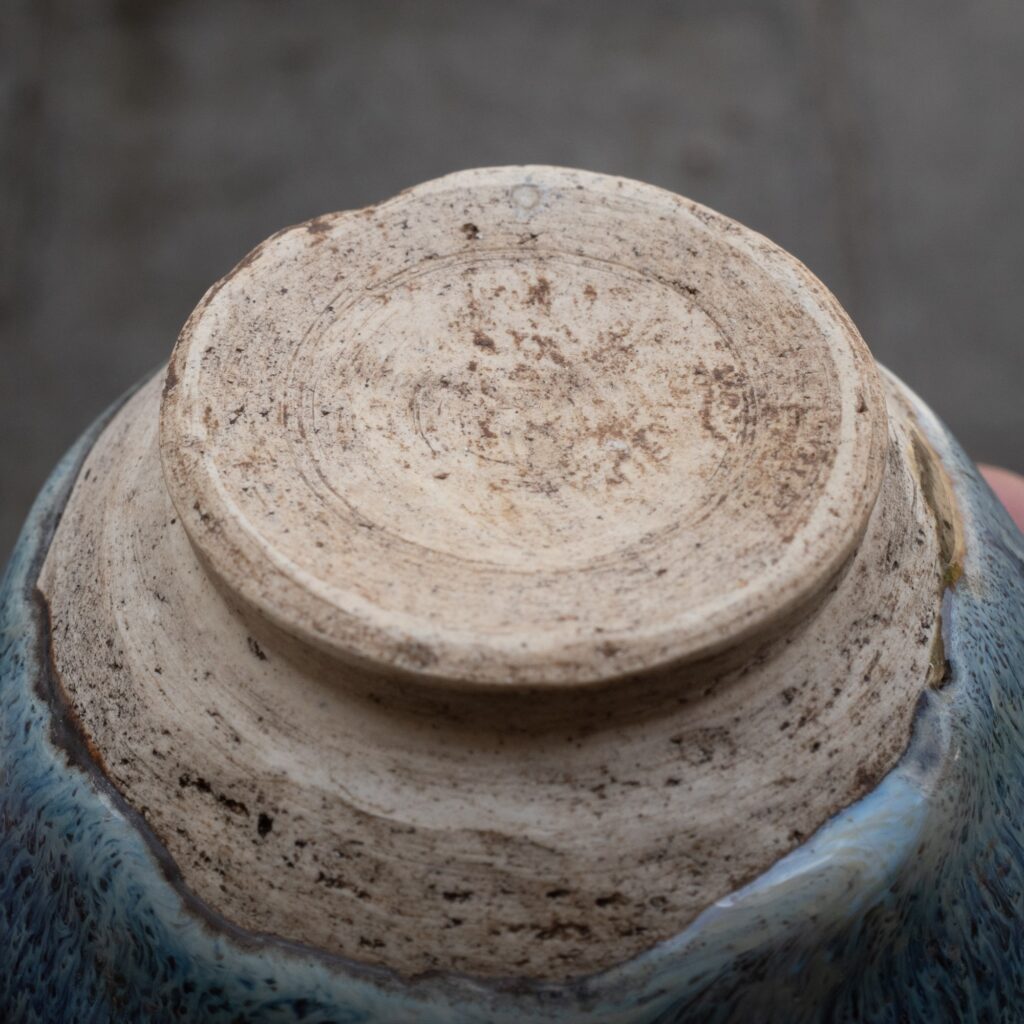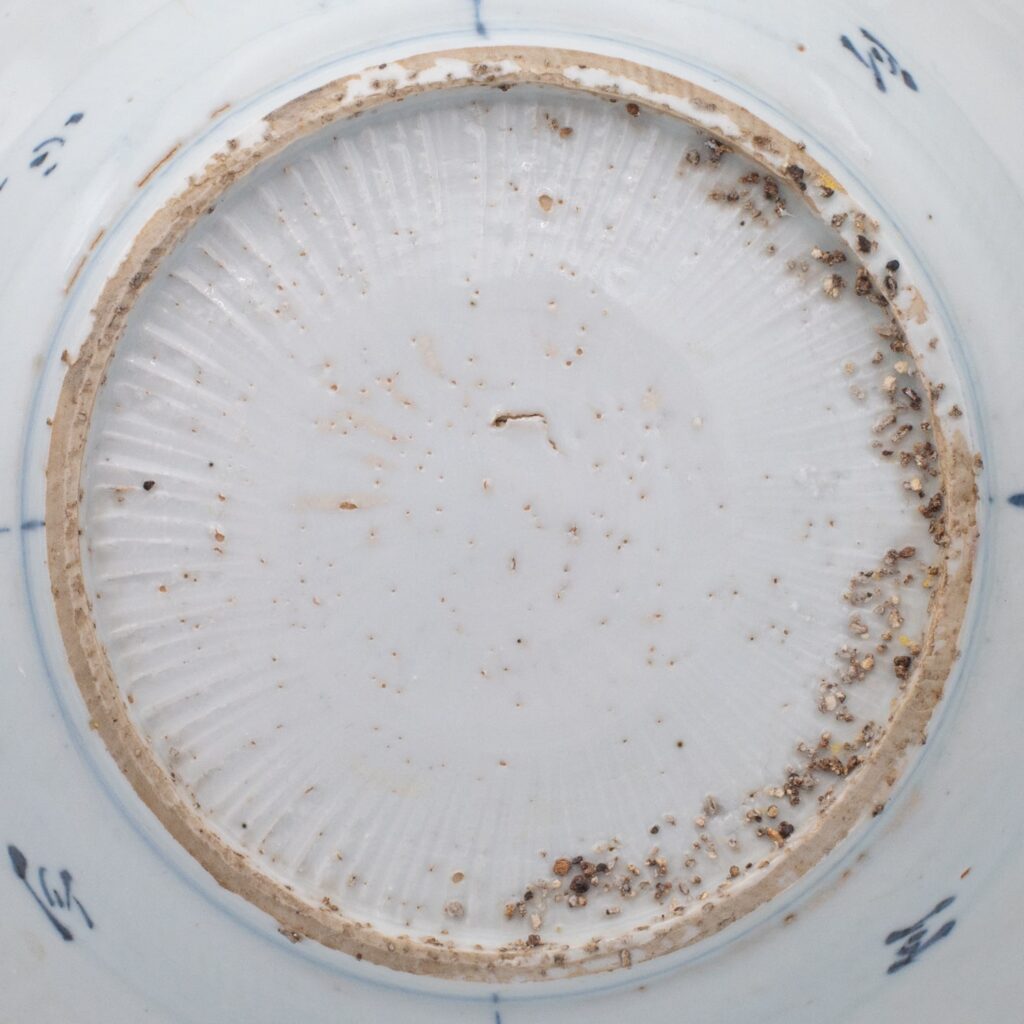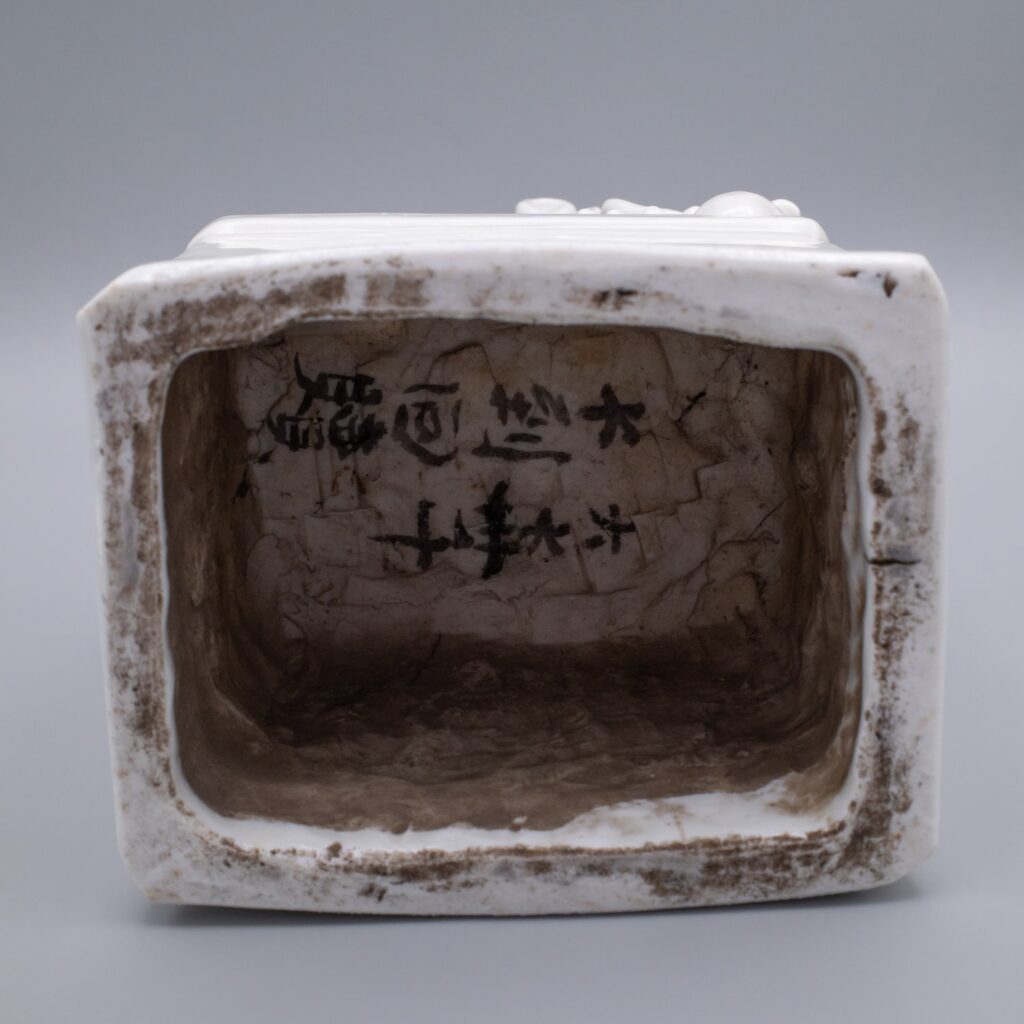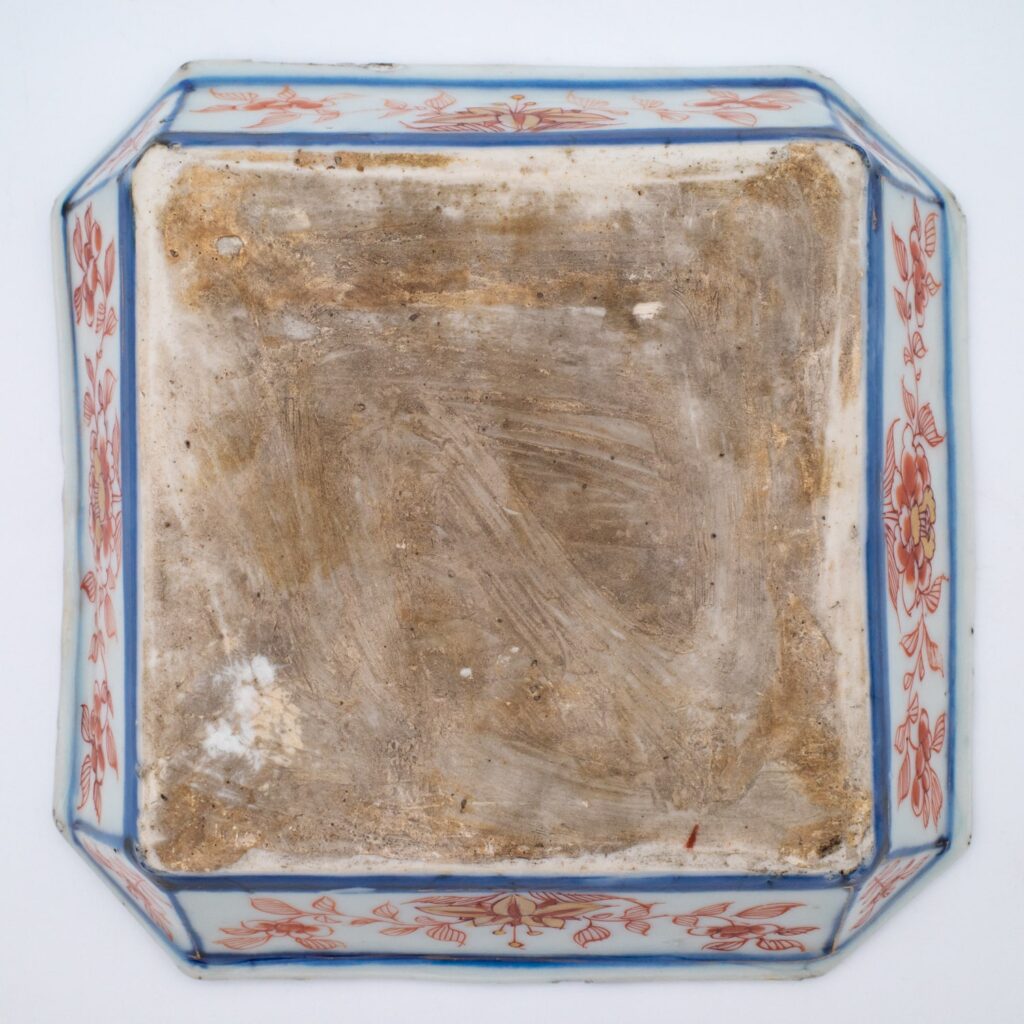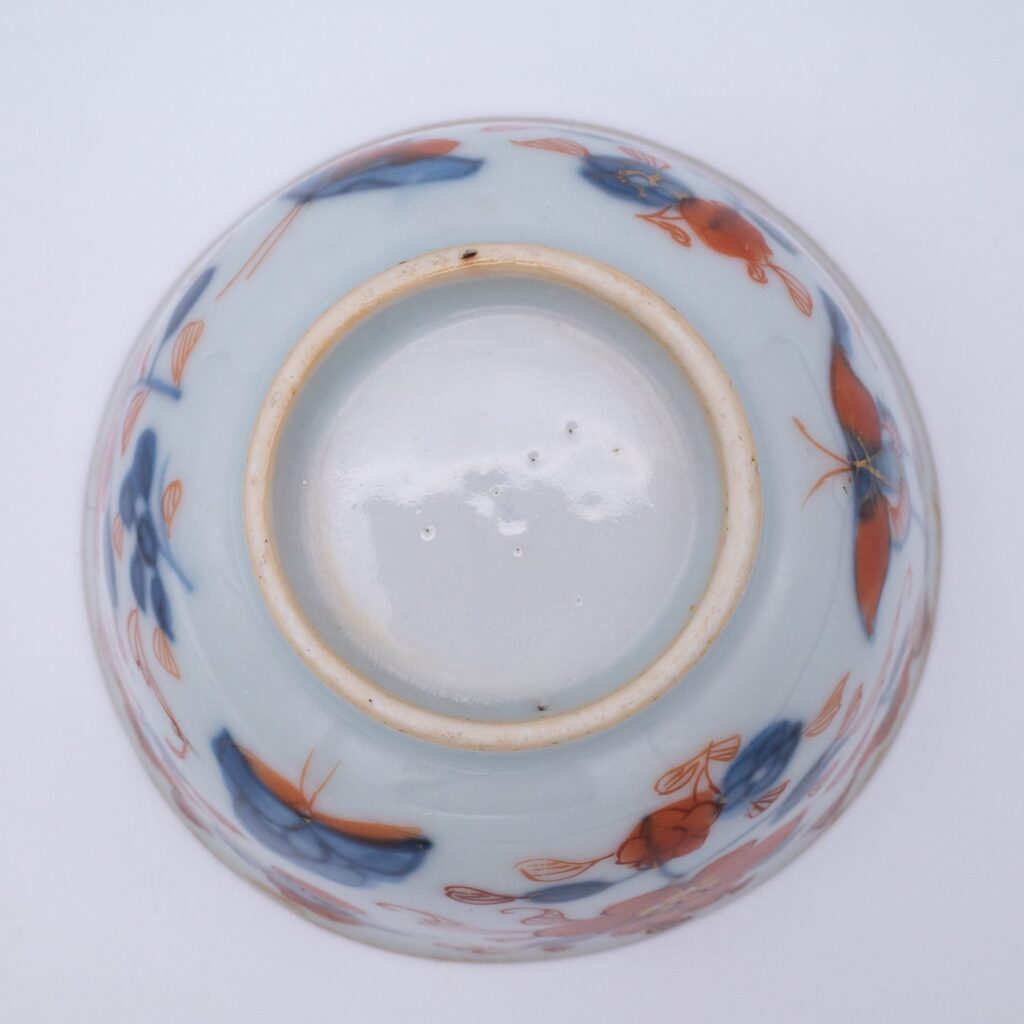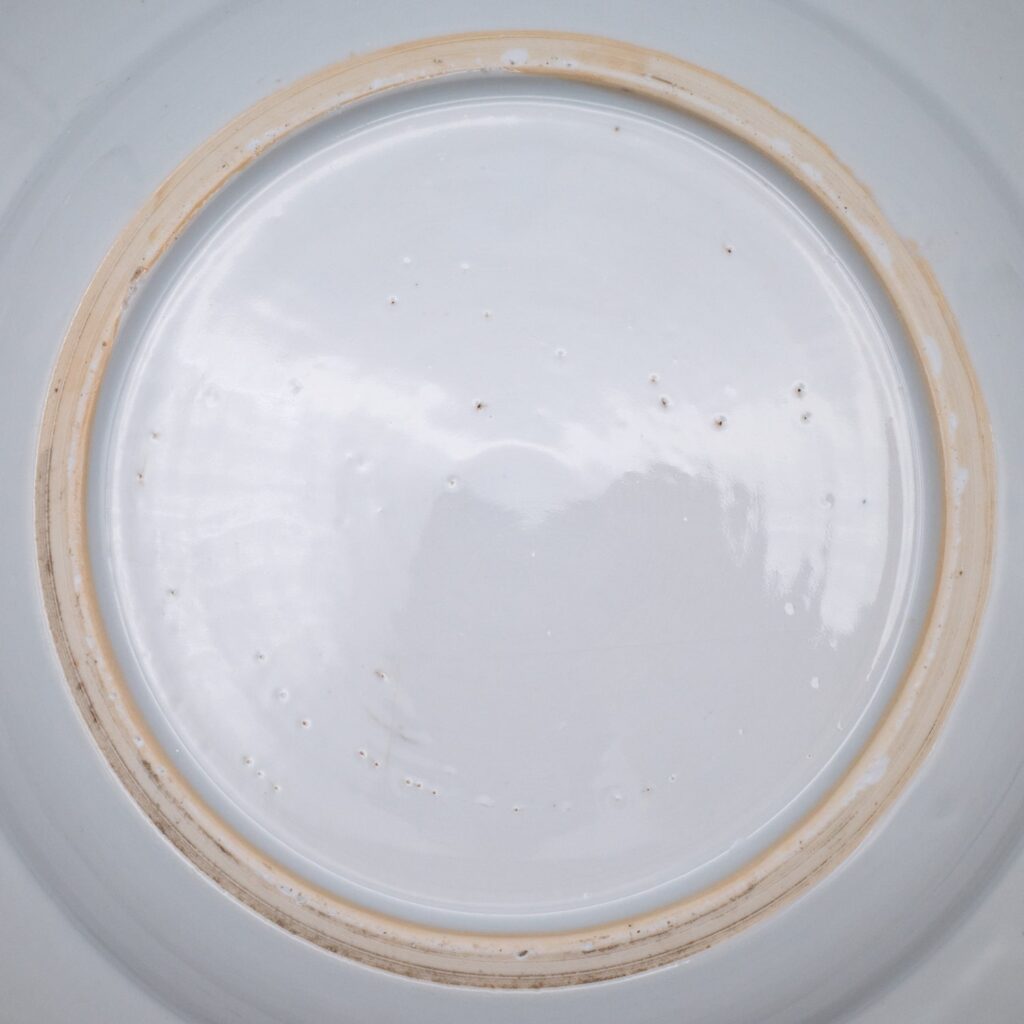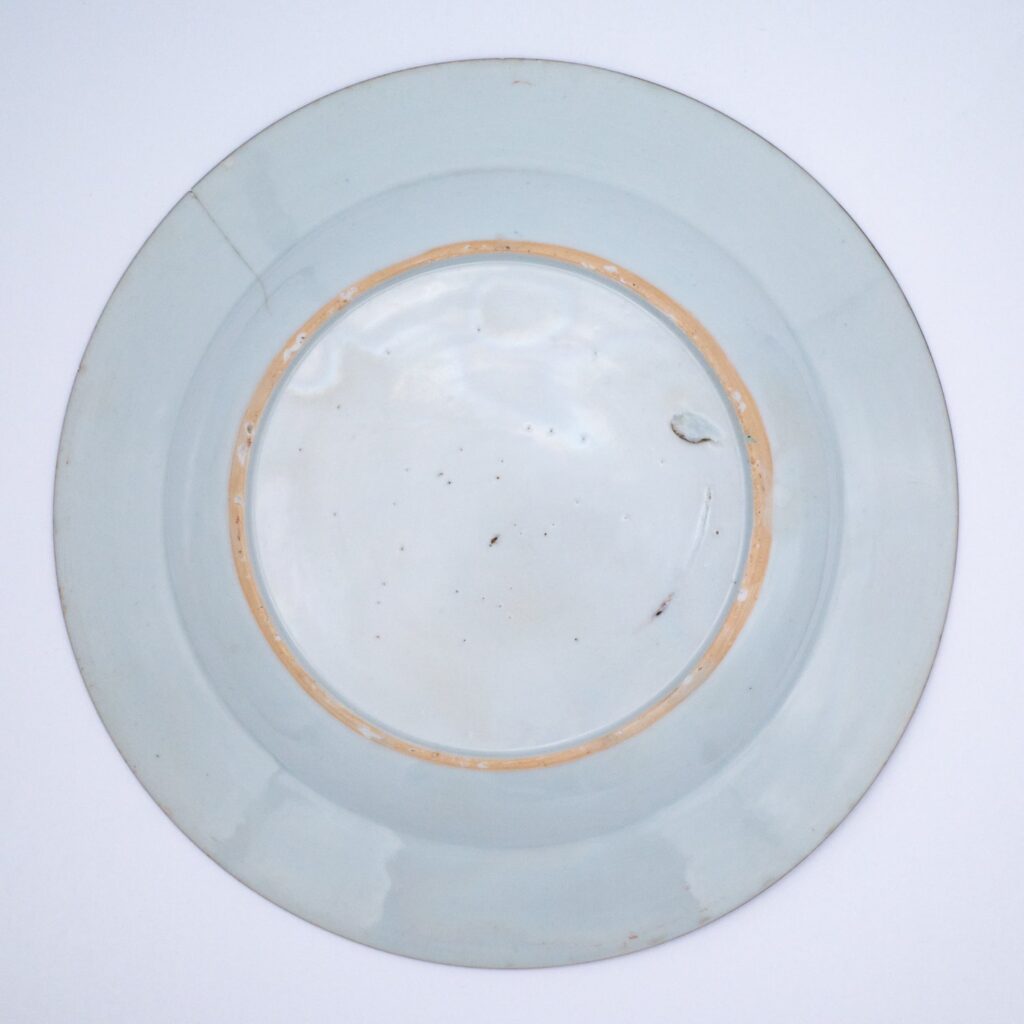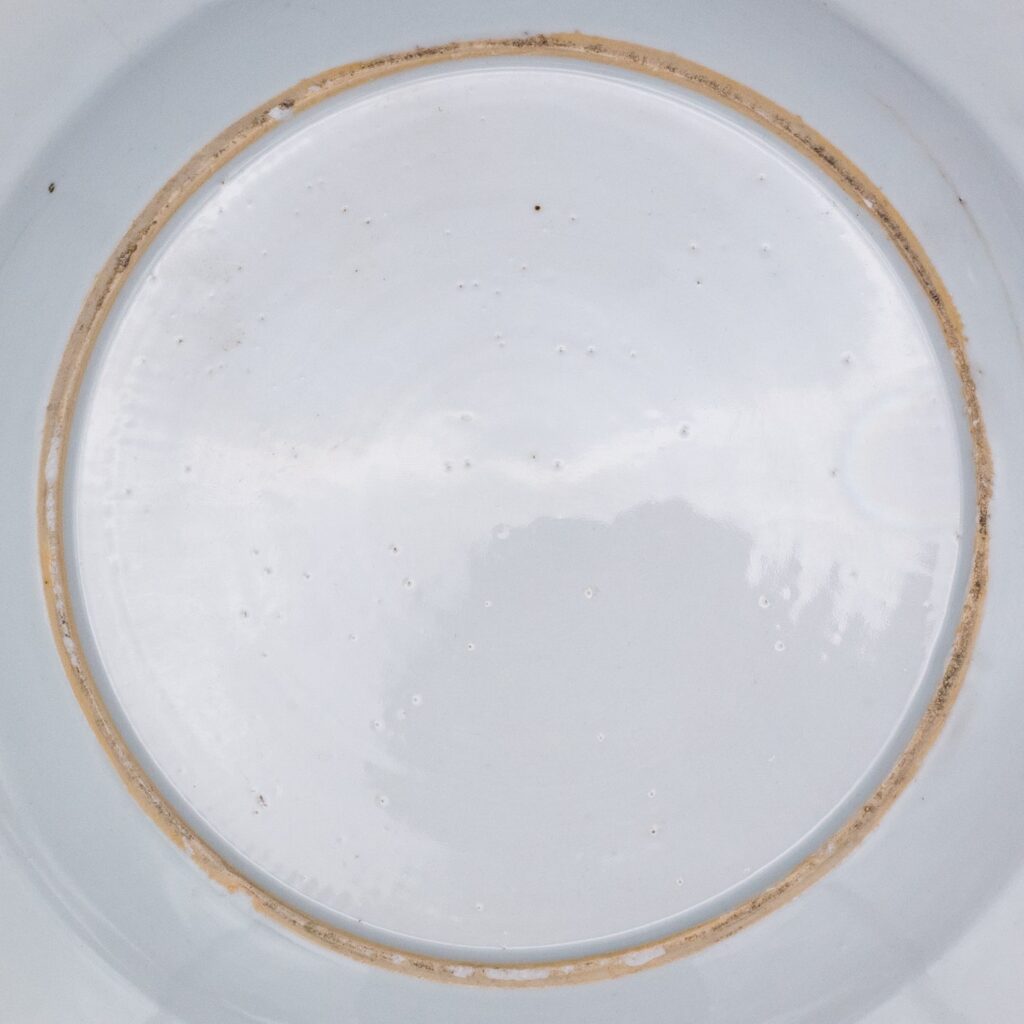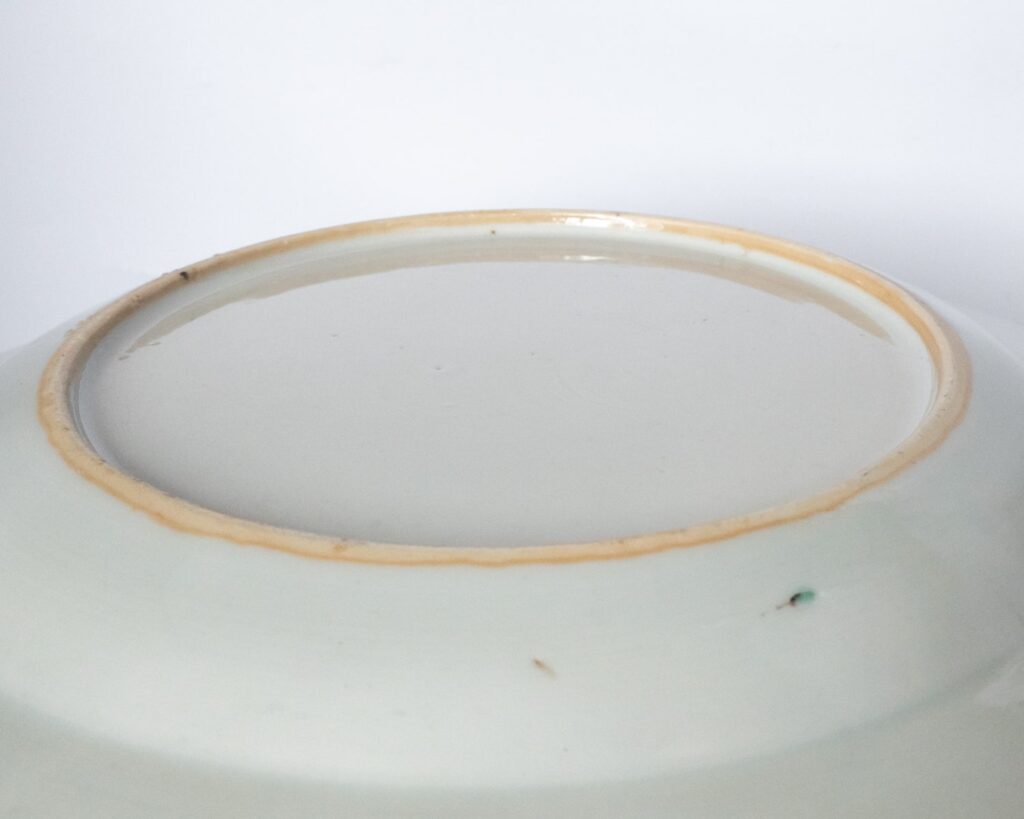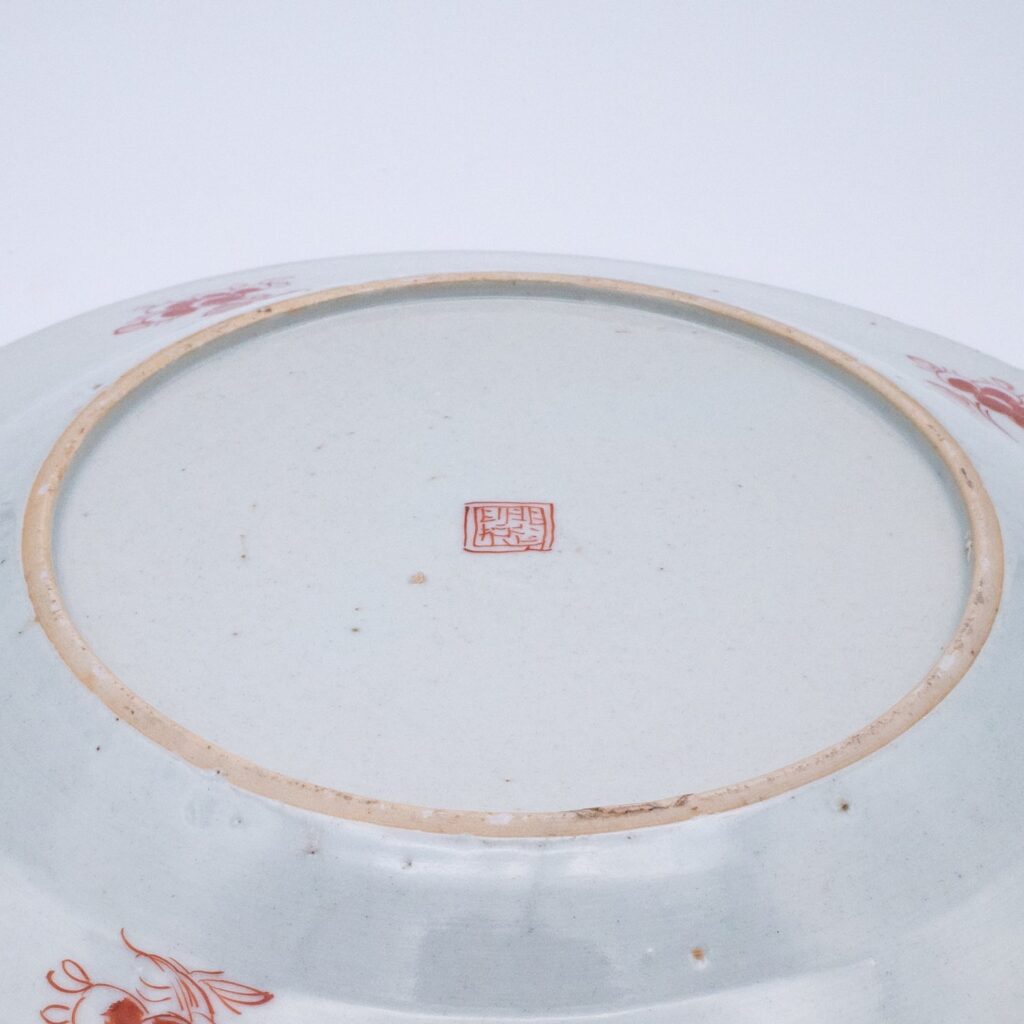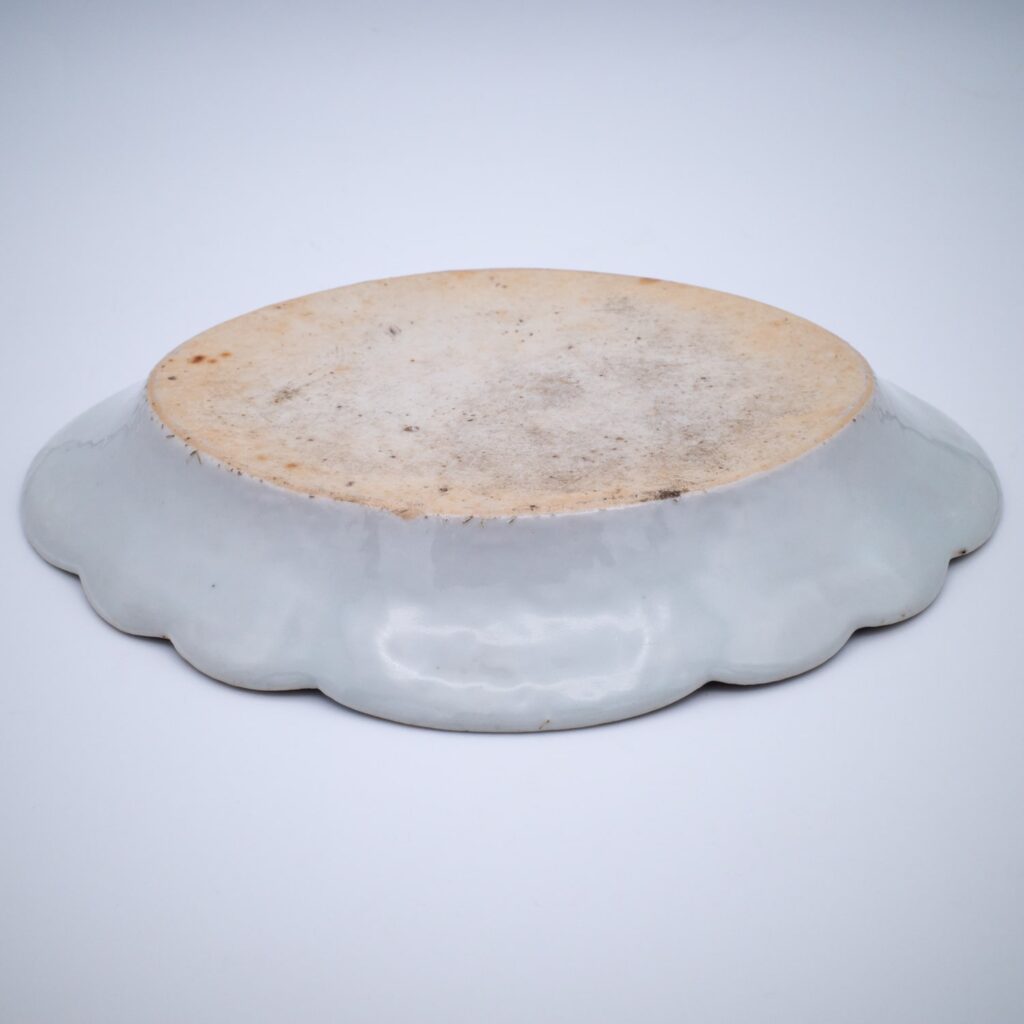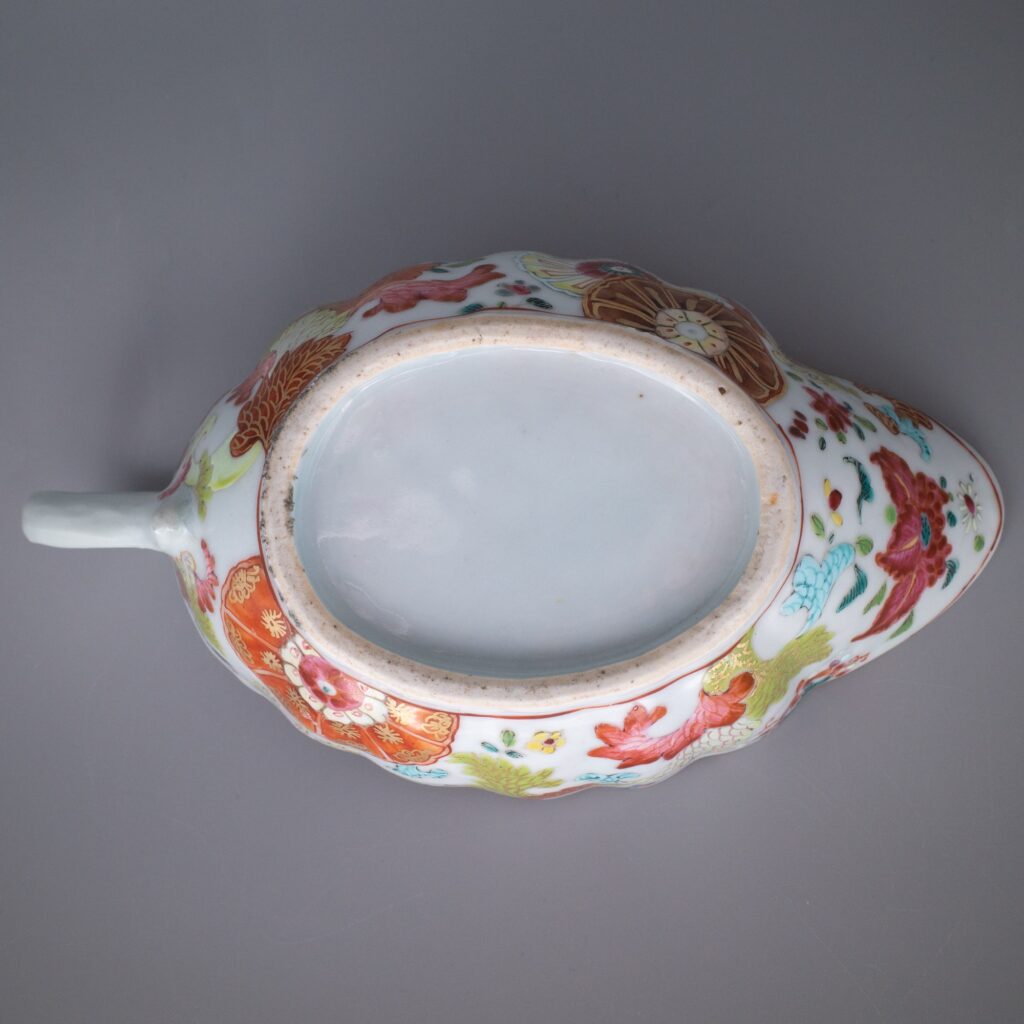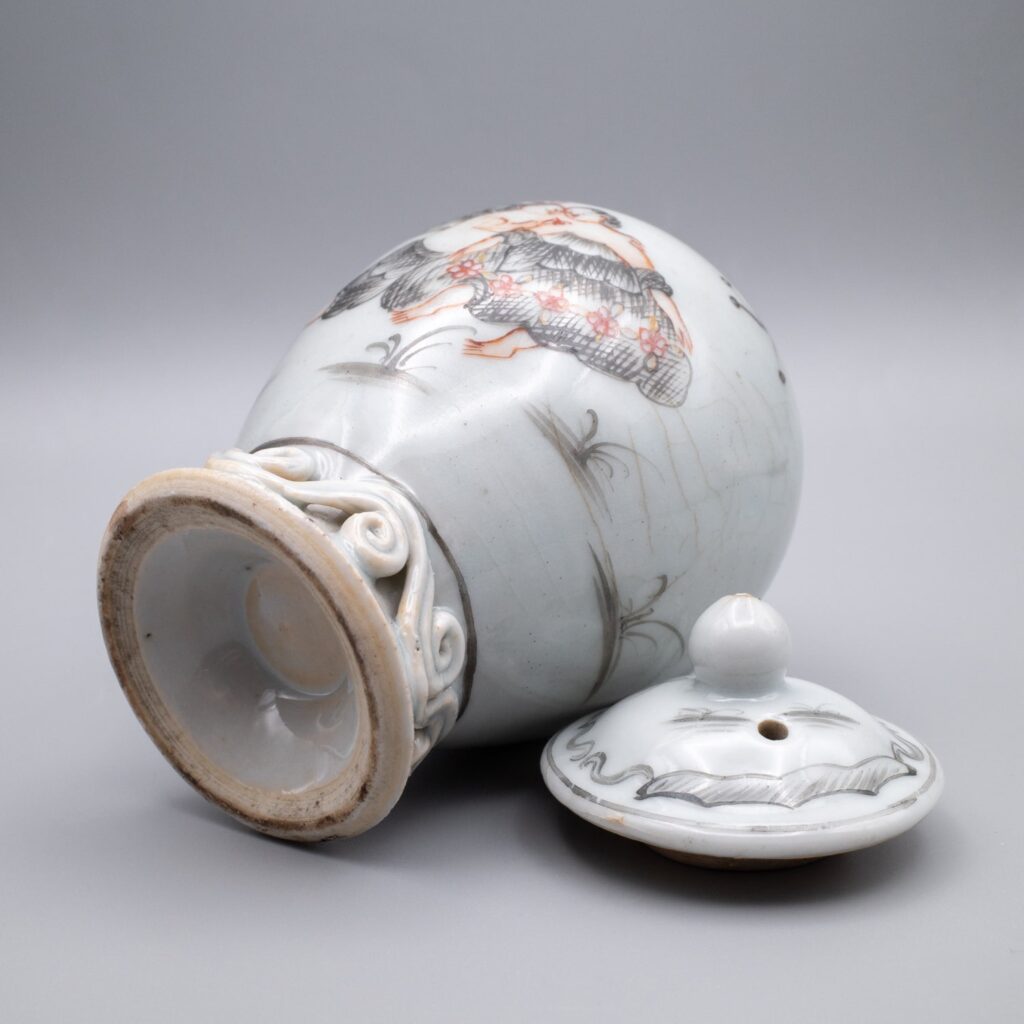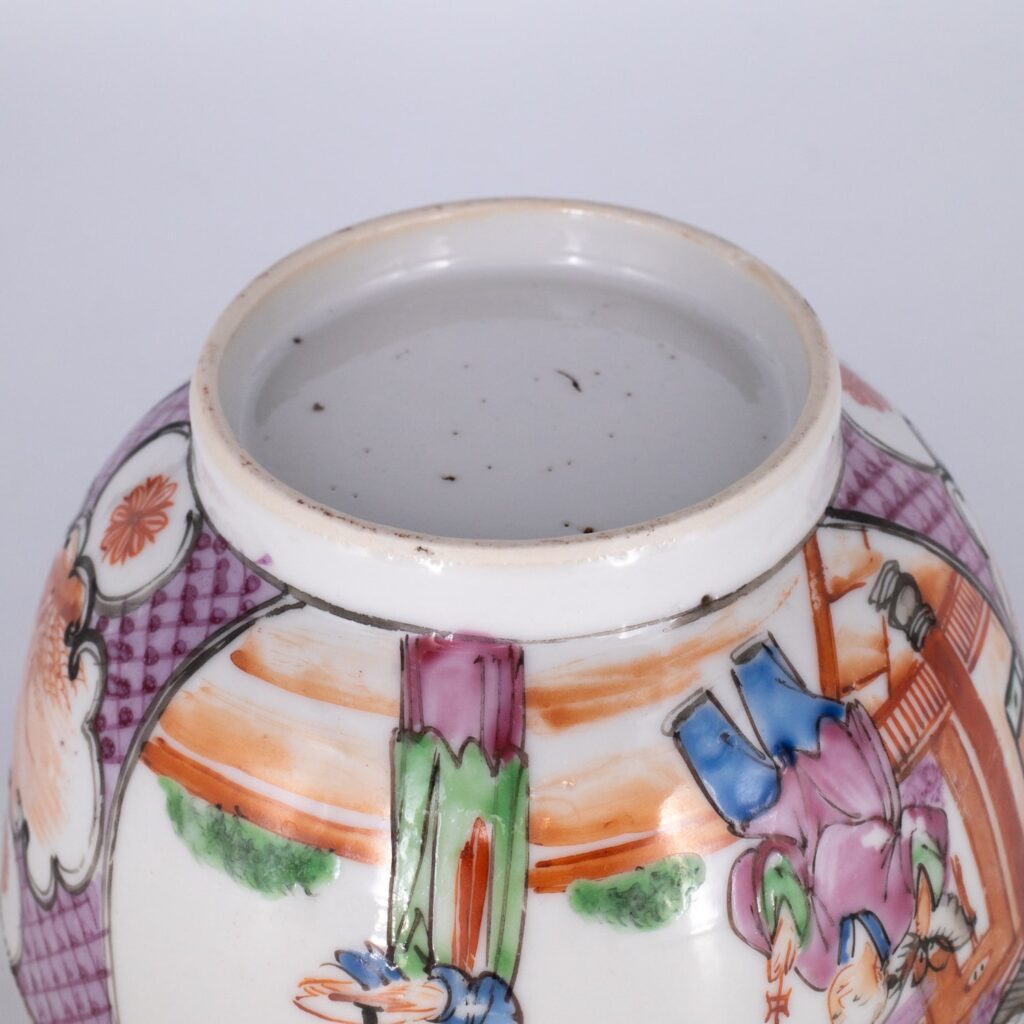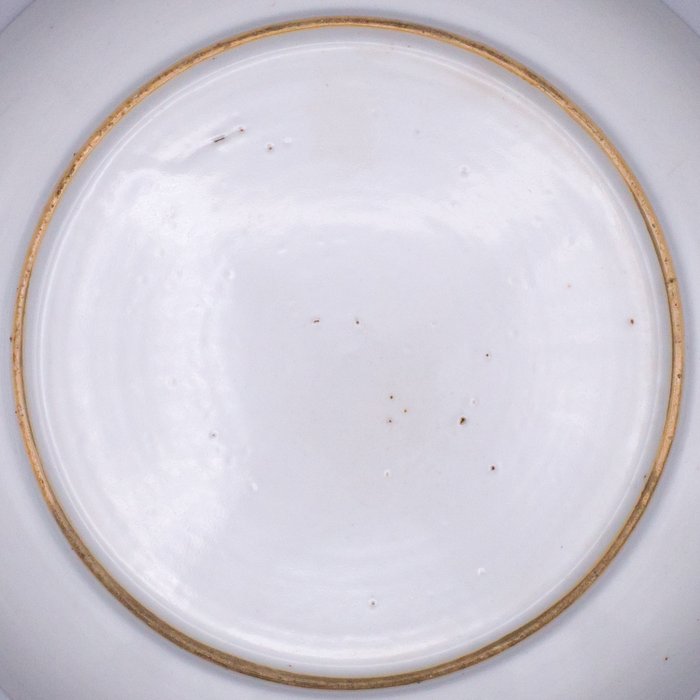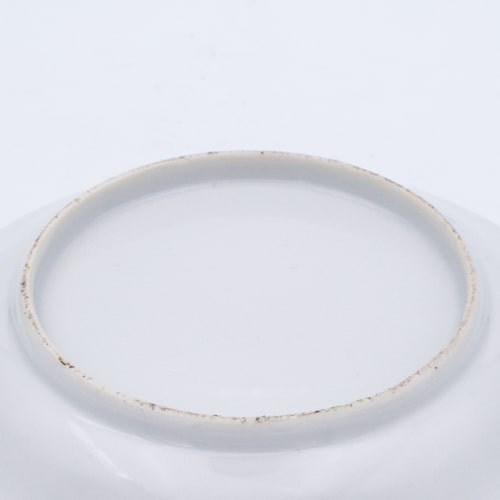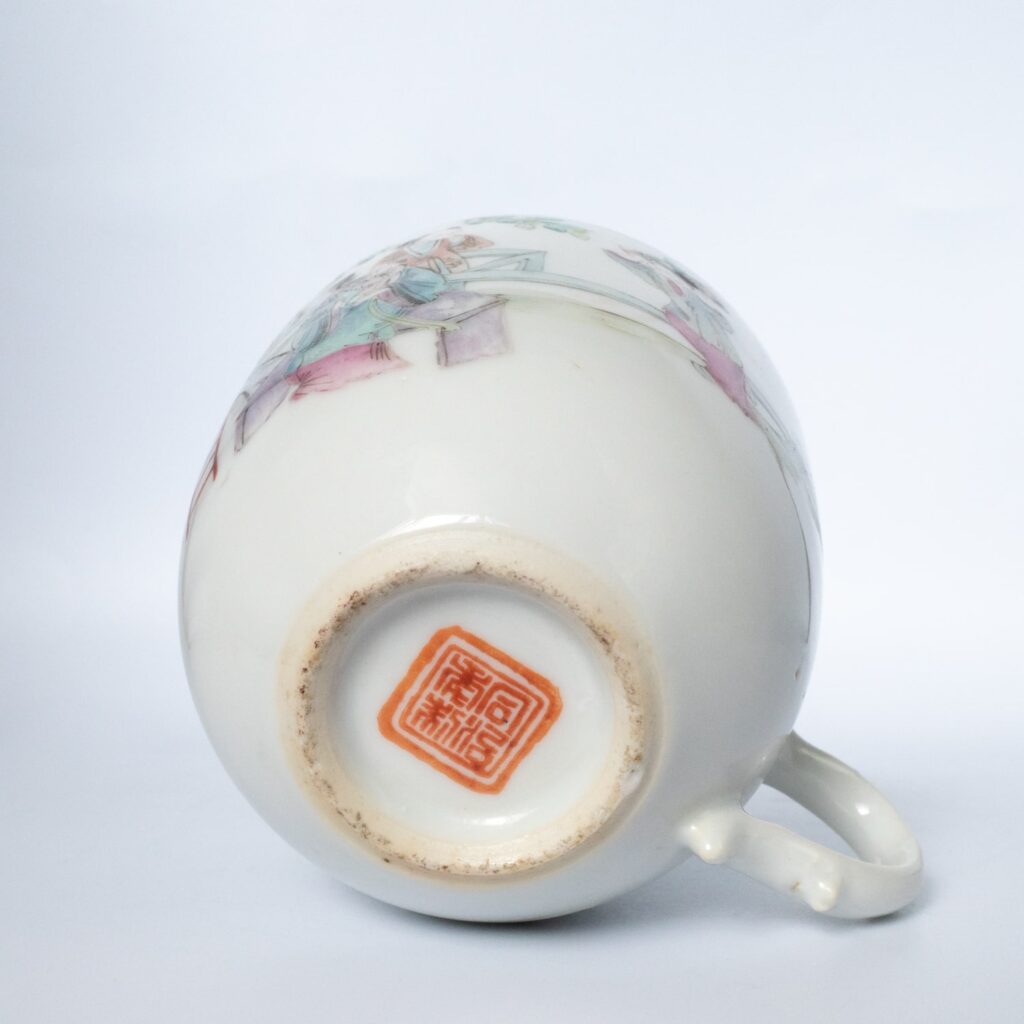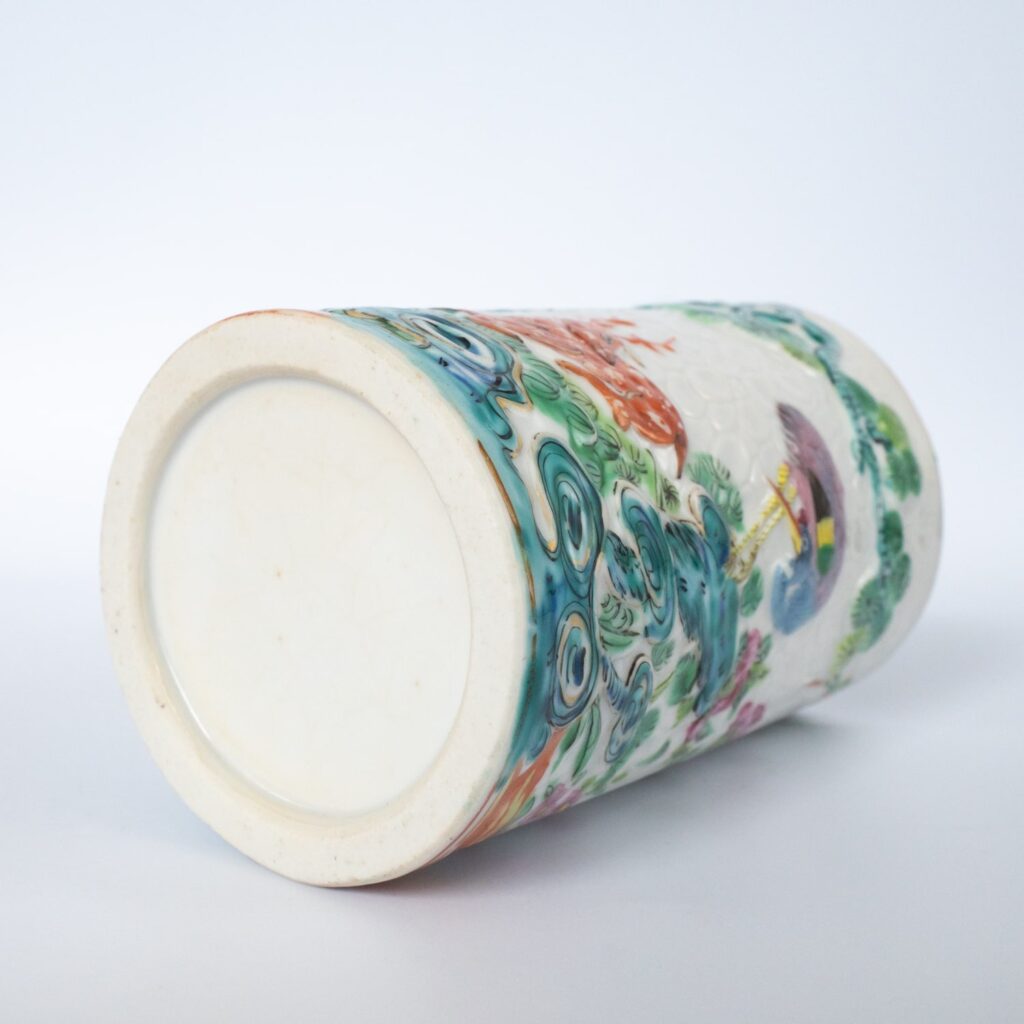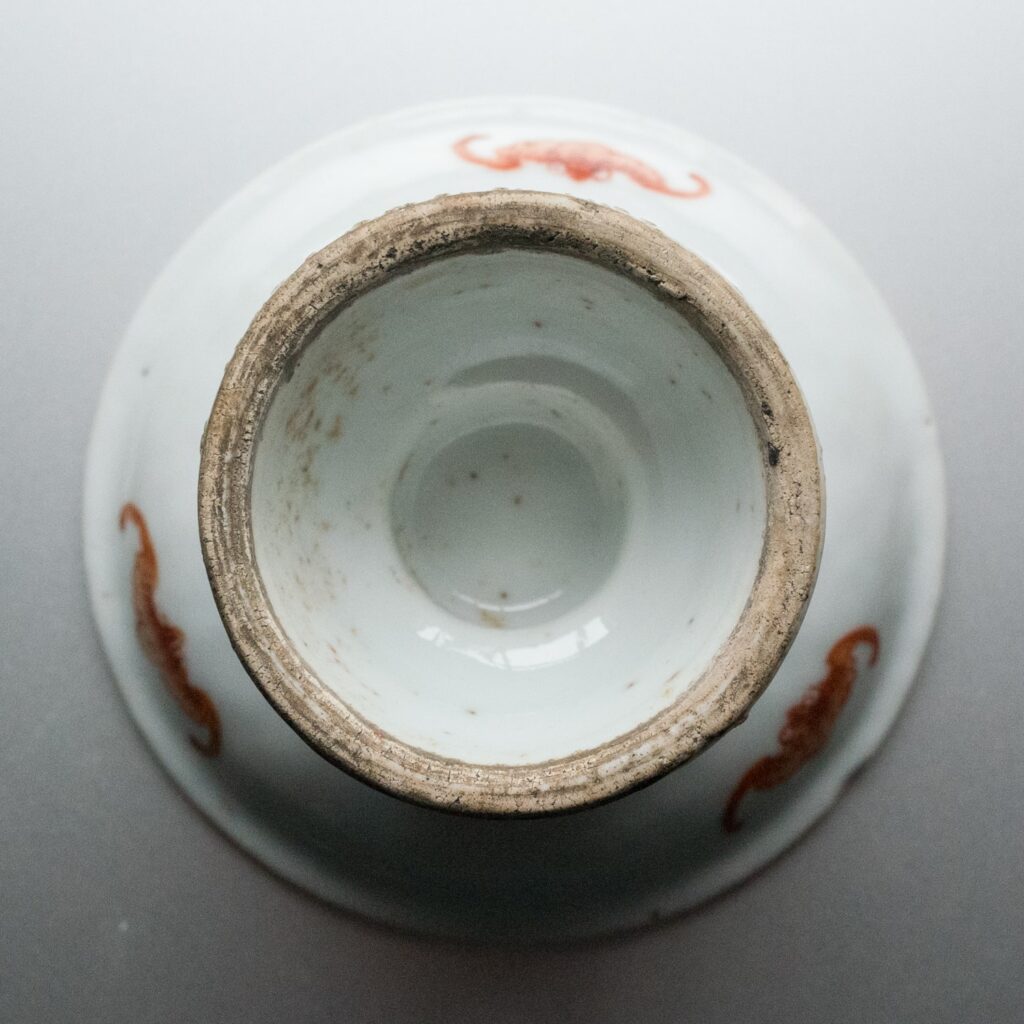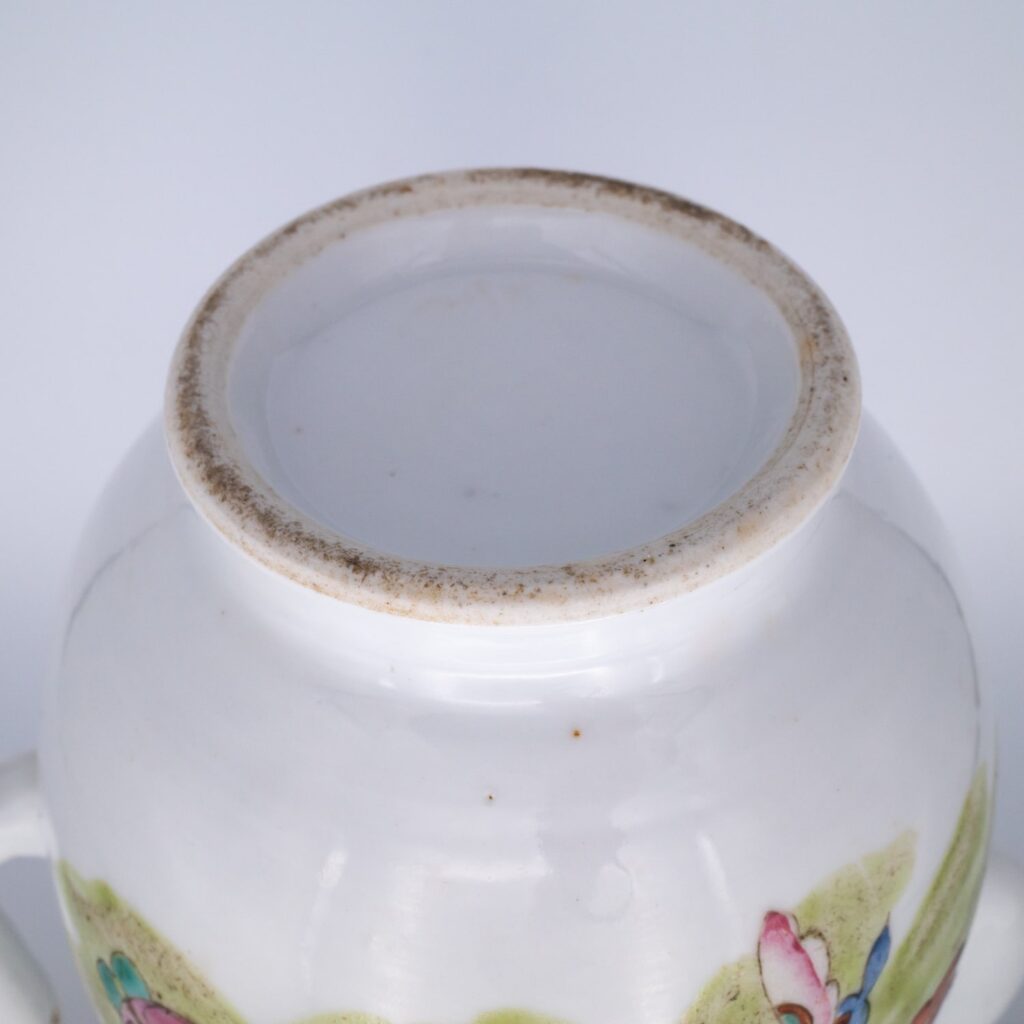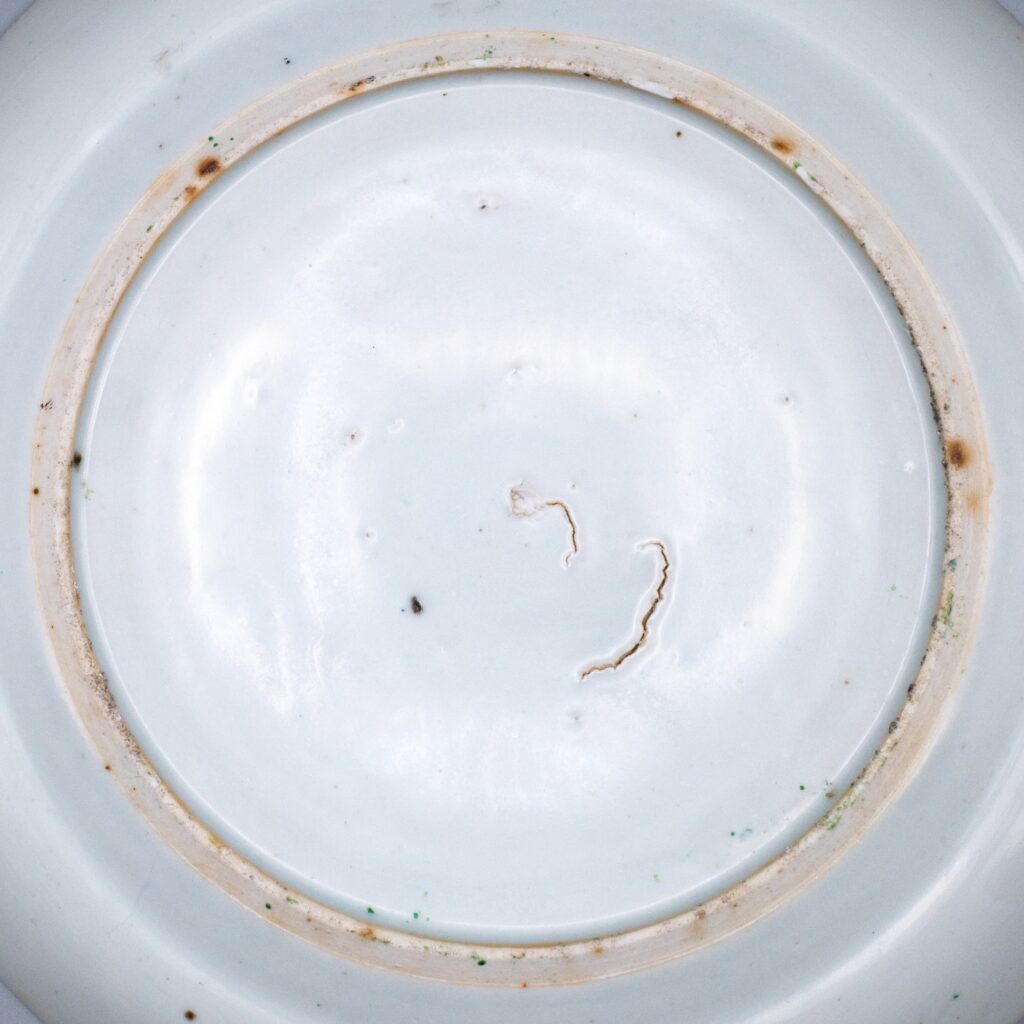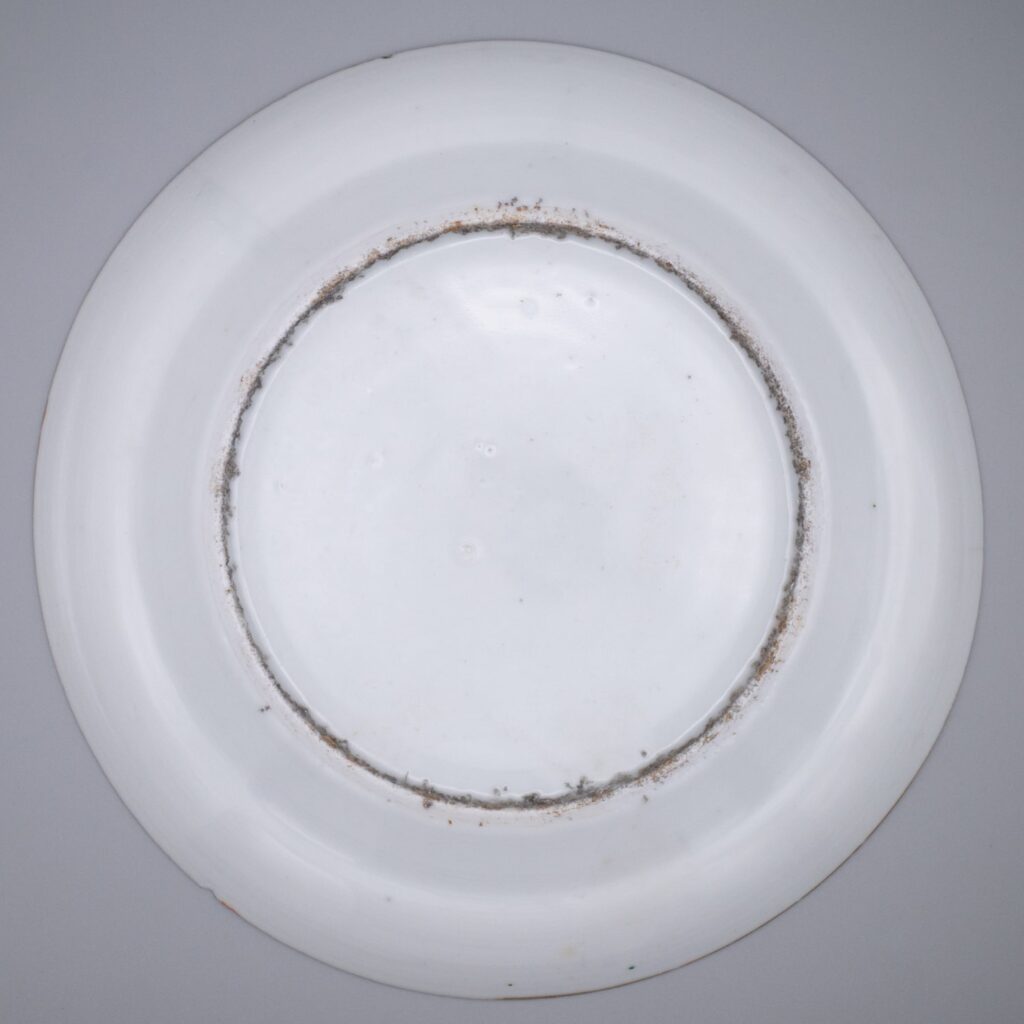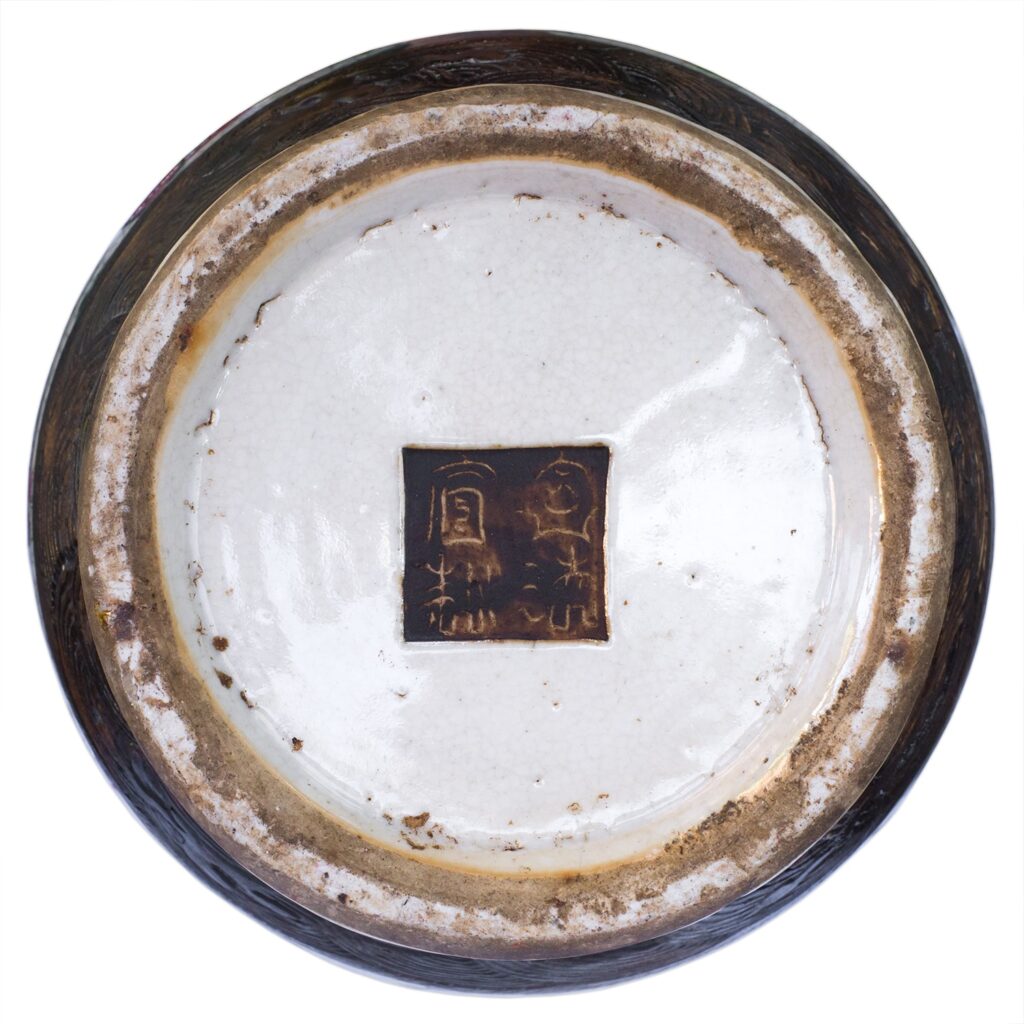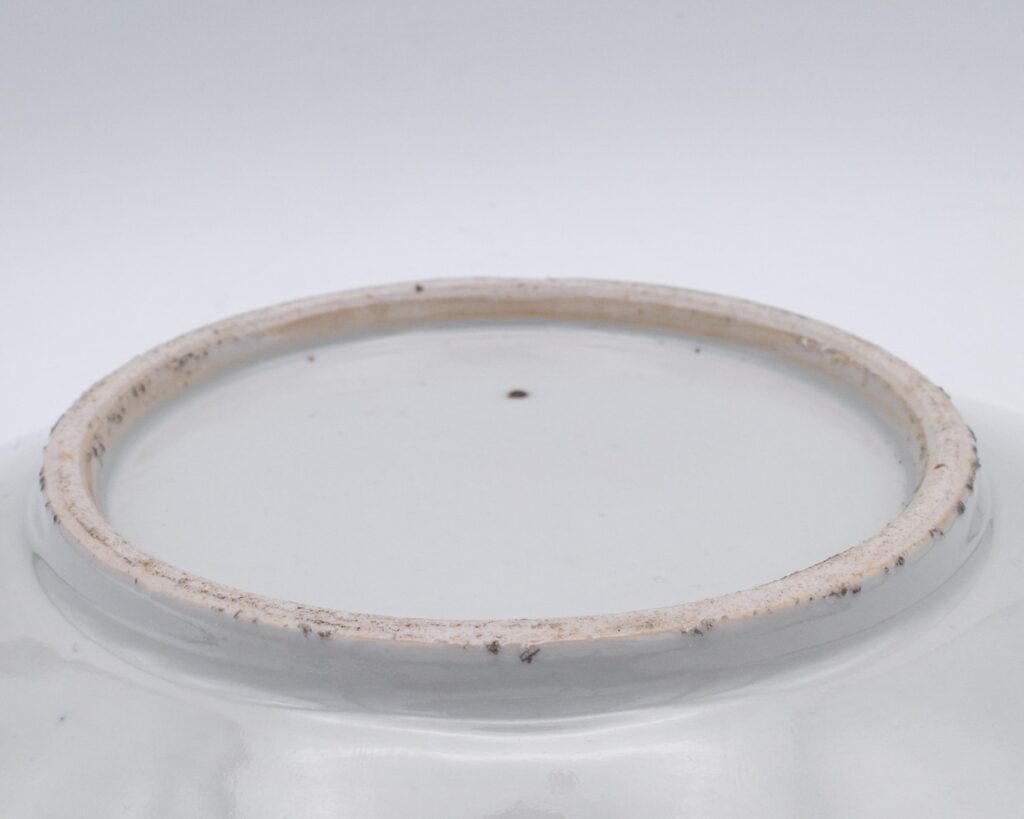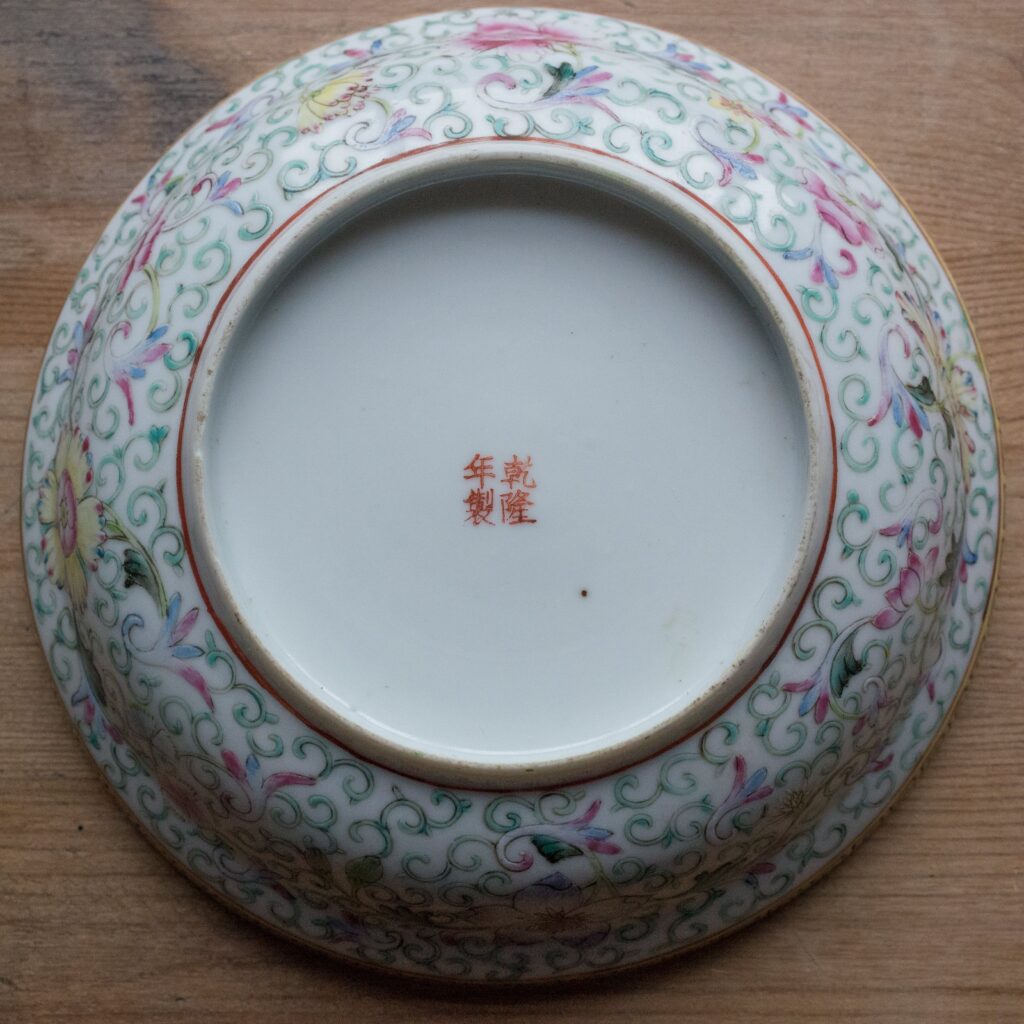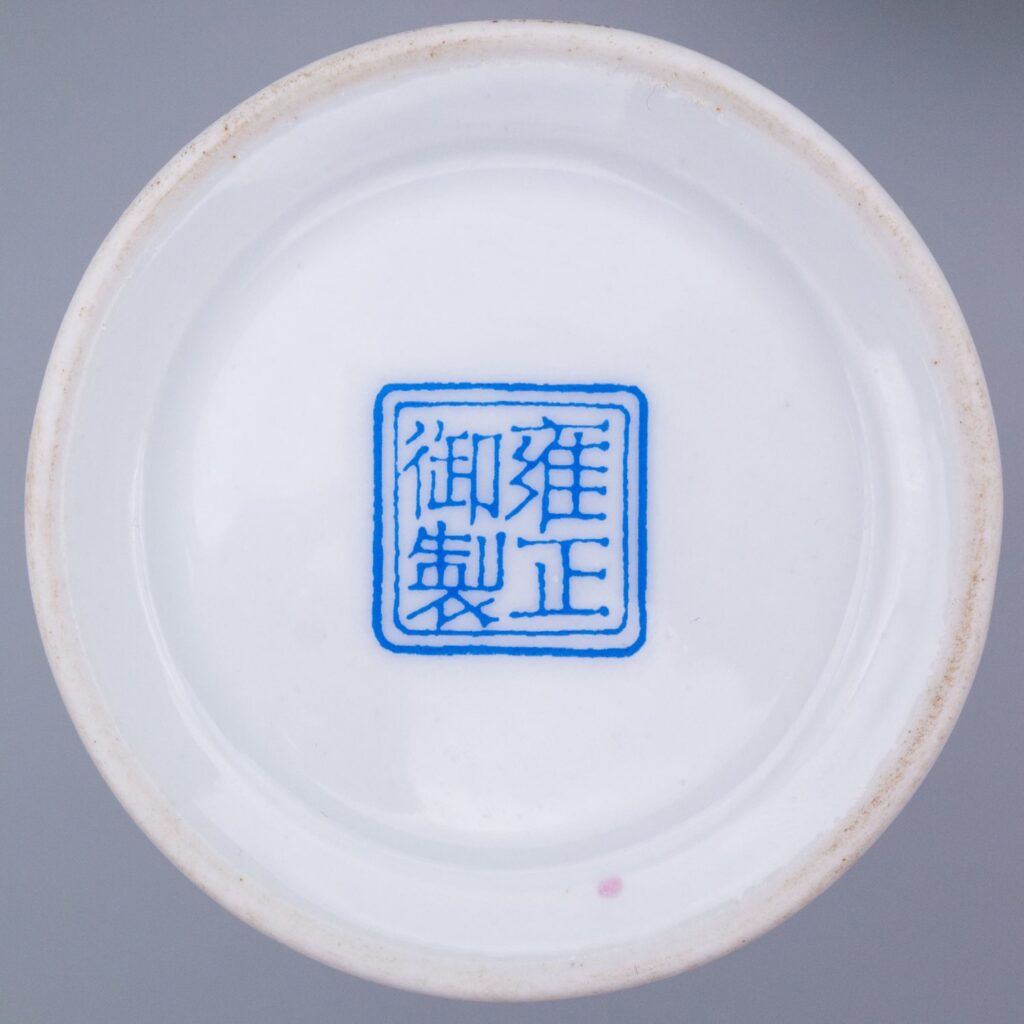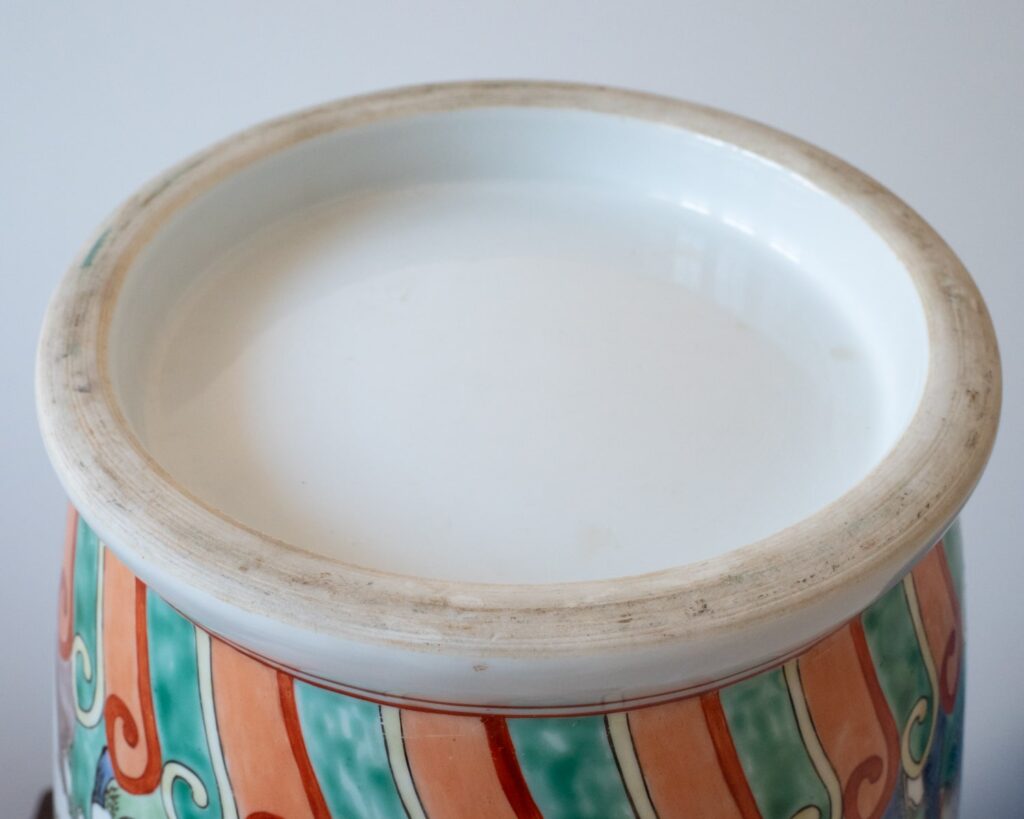Foot rims of Chinese porcelain items could be a very helpful tool when trying to determine whether they are genuine antiques or just one of many modern reproductions that are flooding the market at the moment. When you recognize the trends and forms used during certain periods and dynasties, it is usually quite easy to spot when there is something obviously ‘wrong’ with the piece. However, it’s not always easy to spot a fake based on the foot rim alone, so it is always important to take into consideration all elements of your item when trying to determine its age – material, form, glaze, enamels, firing imperfections, style of the decoration, surface wear, similar known examples etc.
This page lists photos of Chinese foot rims on ceramic pieces dating from the Ming Dynasty to the 20th century. All photos are ours and of items currently in our collection or items that we’ve handled in the past. None of these items were scientifically tested to determine their exact age and all dates provided are based on our own opinion and experience so they might be slightly off. Use this material for reference only as it doesn’t reflect the total variability of pieces produced during these periods.
For the dating of Chinese porcelain marks, see our Chinese Porcelain Marks Identification Guide.
Last update: November 2025
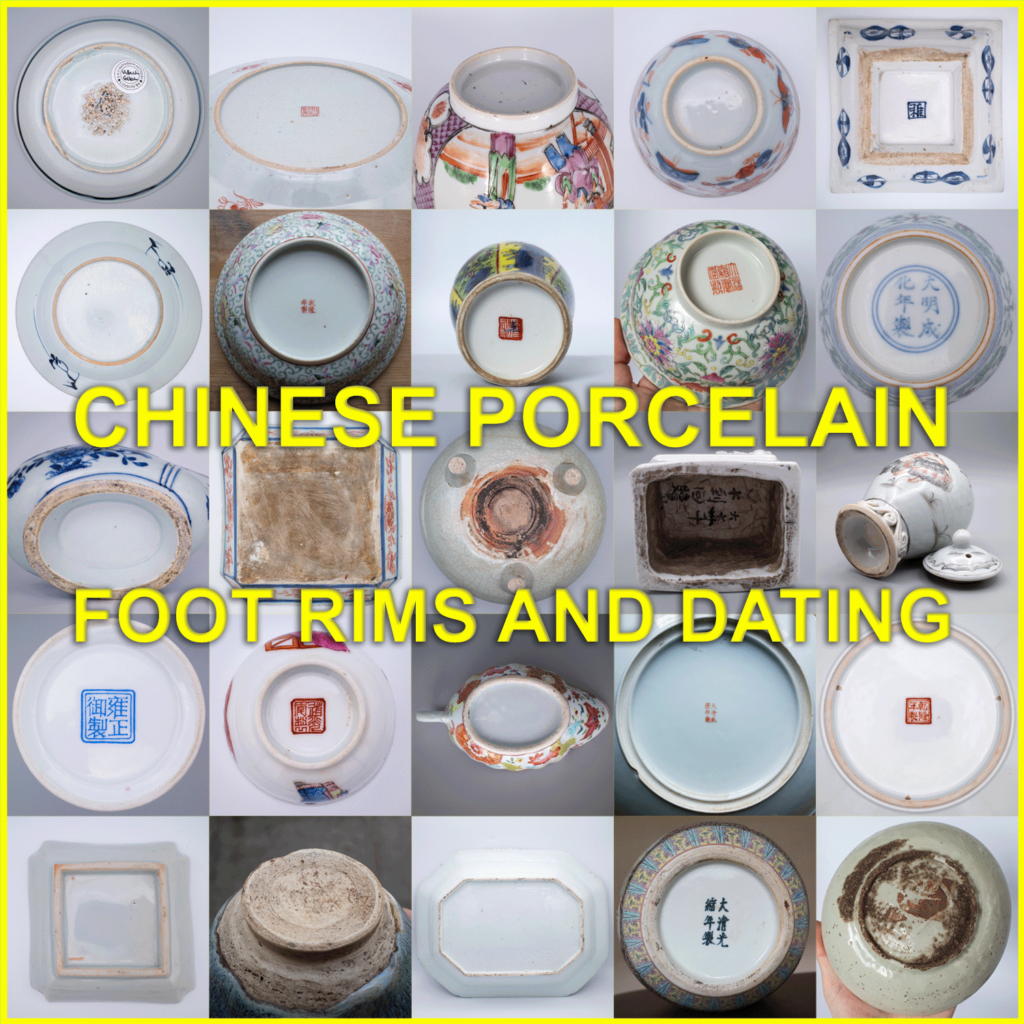
Need more help?

 New in our eBay shop
New in our eBay shop
Ming Dynasty (1368-1644)
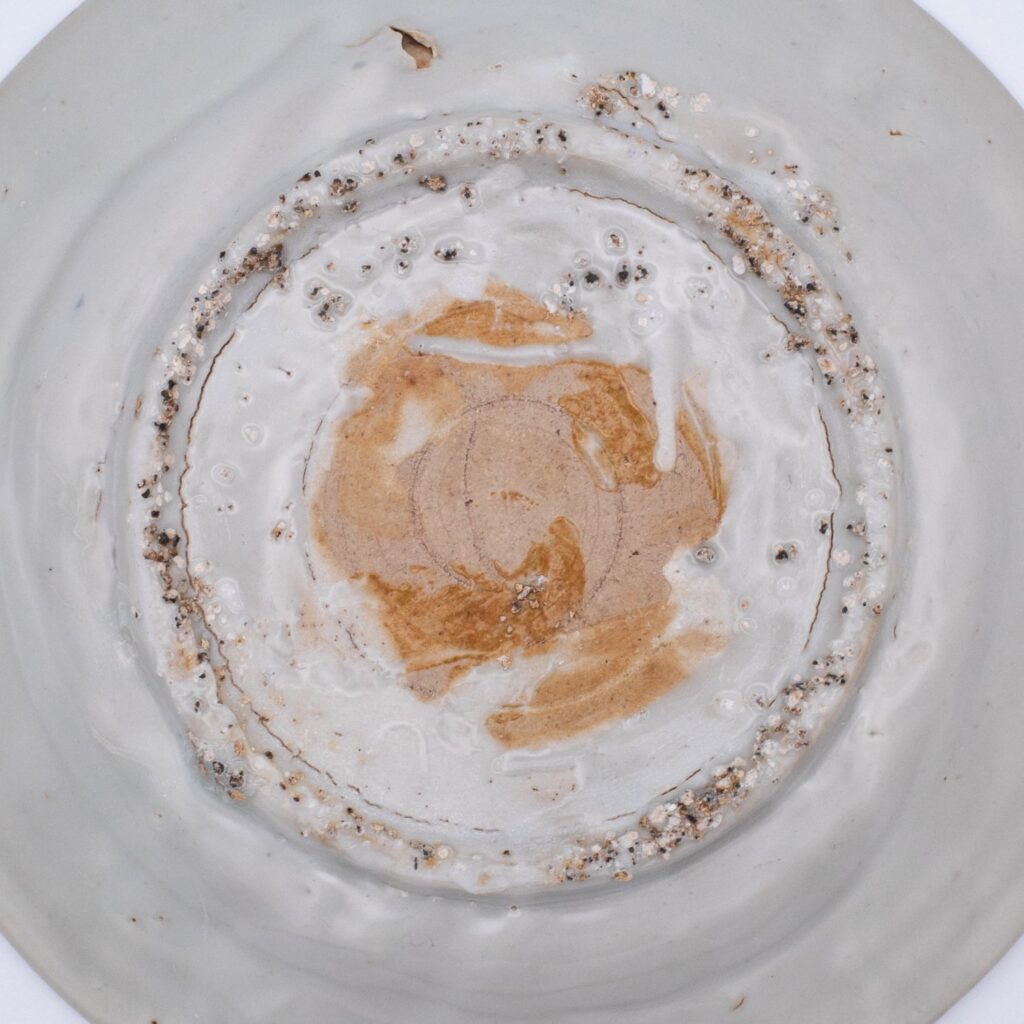
Blue and white Swatow dish with typical ‘messy’ base with remnants of kiln grit, c. Wanli period, late 16th-early 17th century.
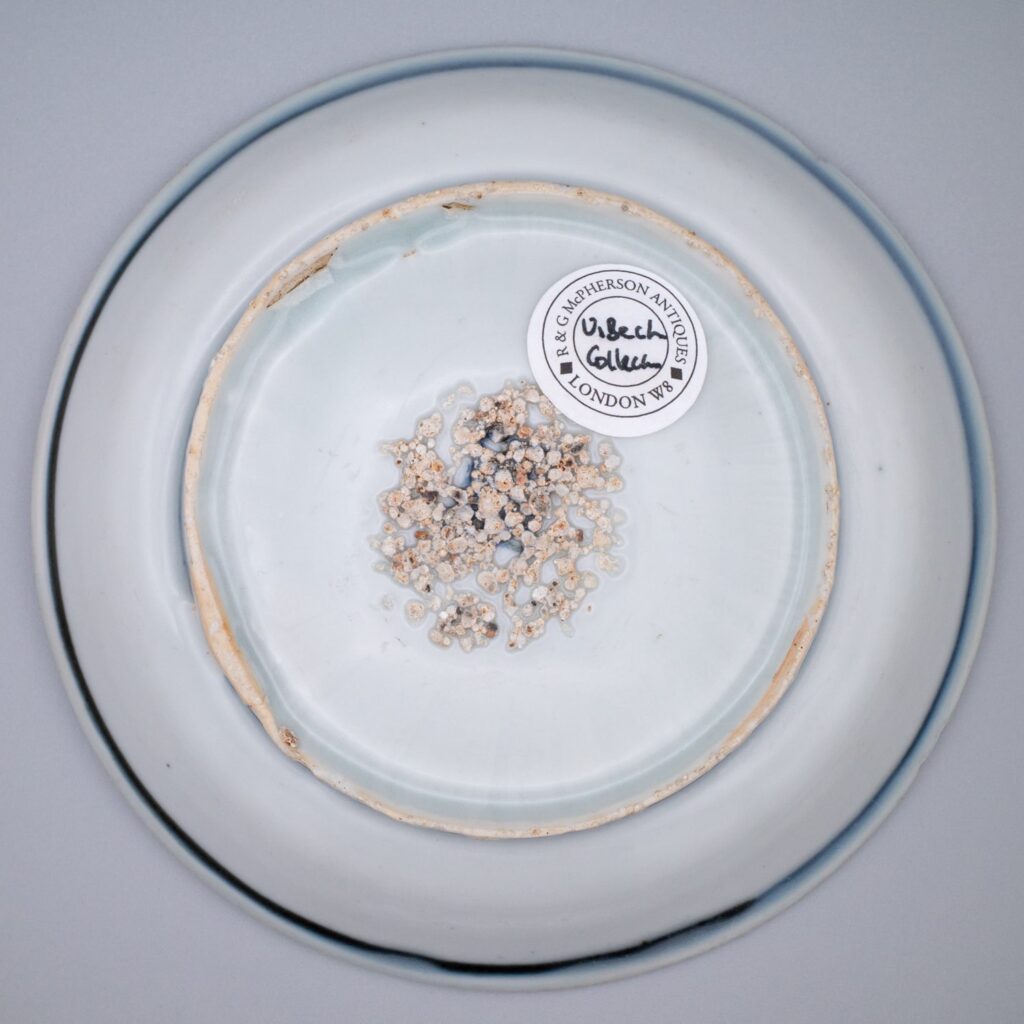
Blue and white porcelain dish with coiled chilong design, c. Wanli period, late 16th-early 17th century.
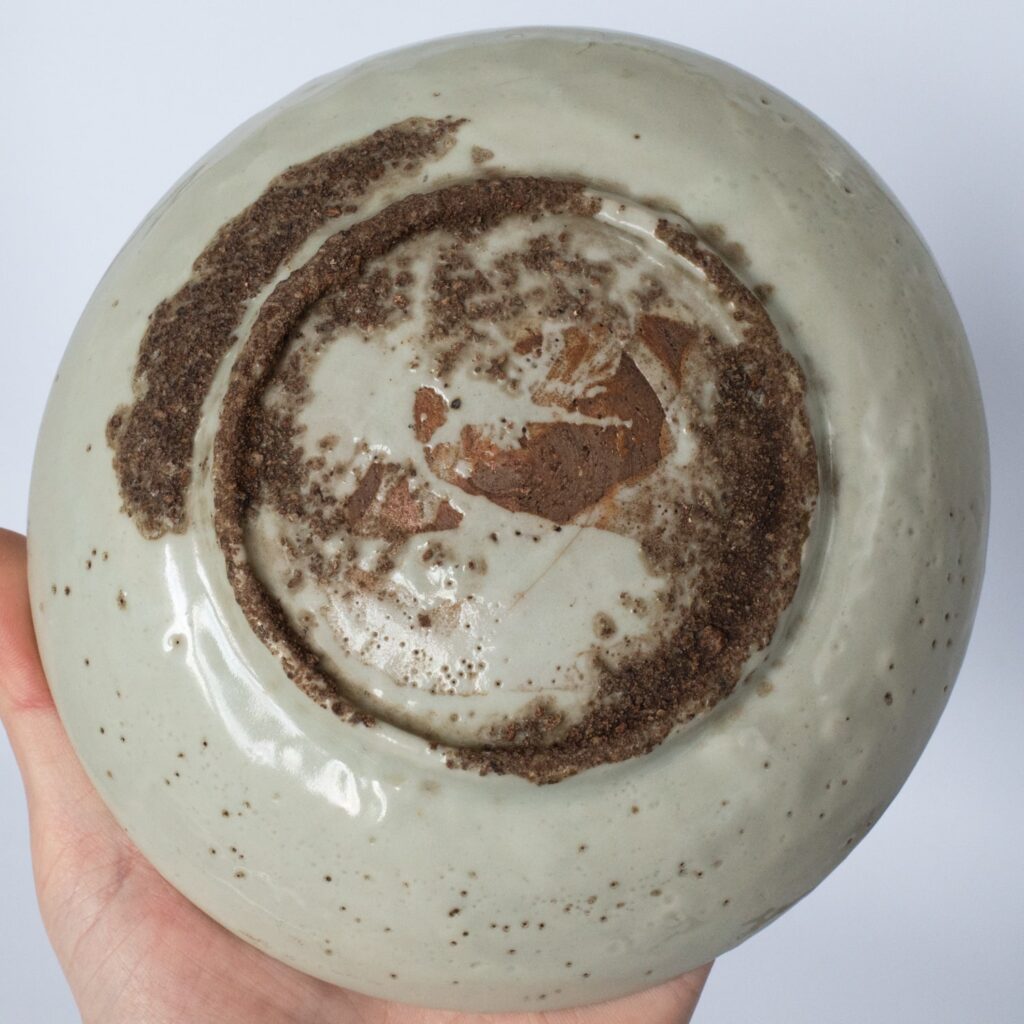
Another dish with ‘messy’ glazing and a lot of kiln grit. Late Ming dynasty, first half of the 17th century
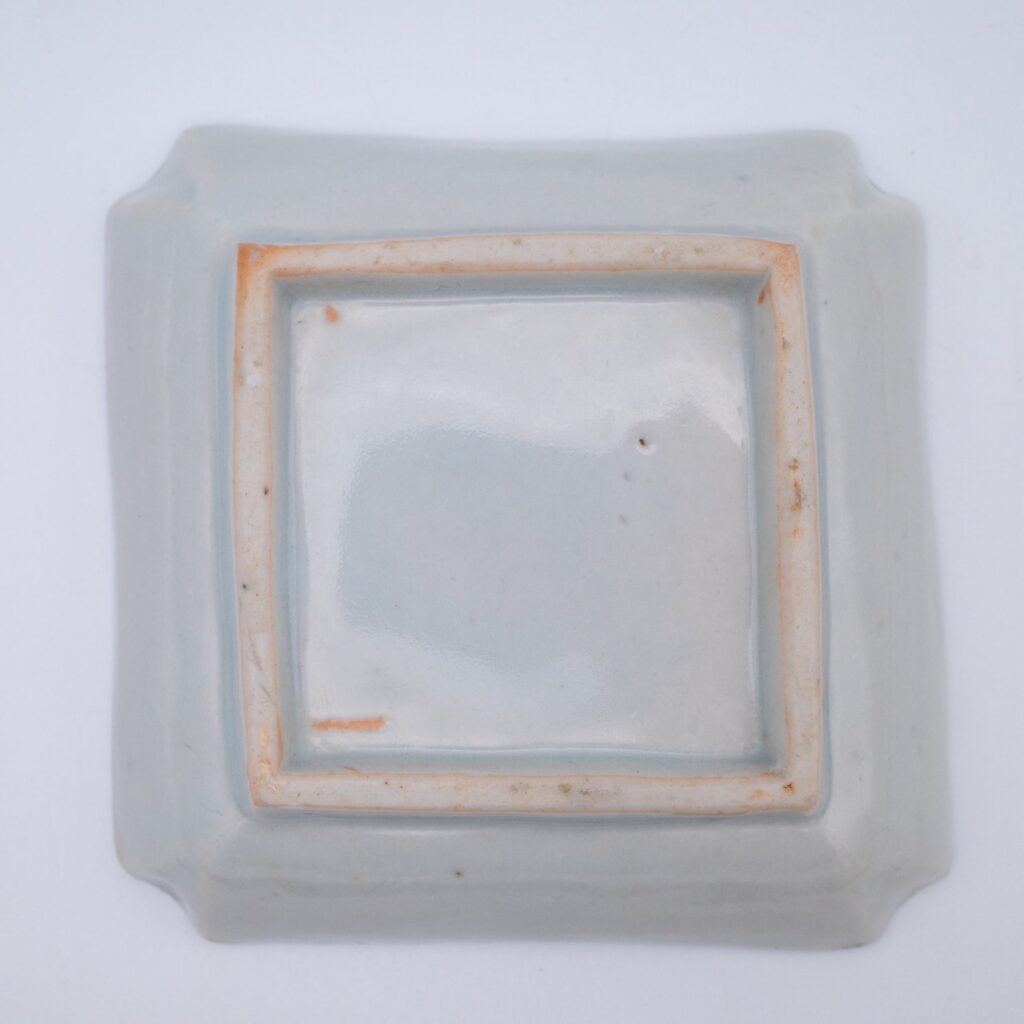
Rectangular blue and white ‘ko-sometsuke’ dish with a leaping carp, late Ming dynasty, first half of the 17th century
Early Qing Dynasty – Kangxi/Yongzheng Period
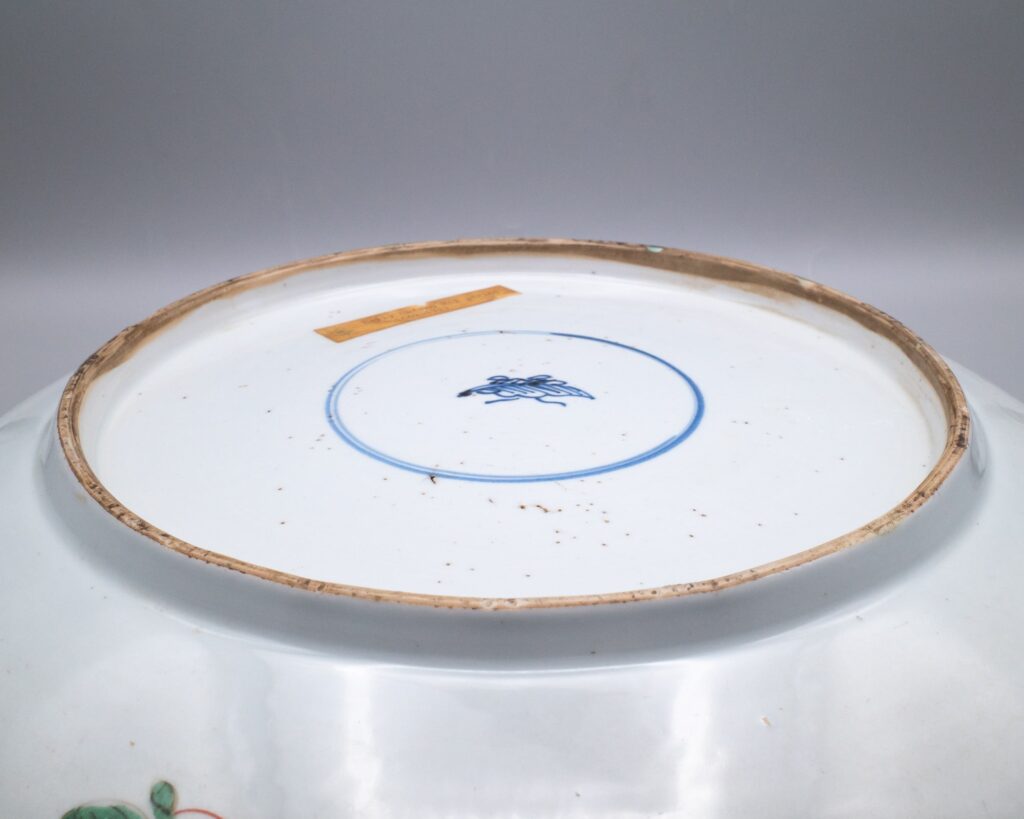
Early Kangxi period wucai decorated charger with underglaze blue artemisia leaf mark inside a double circle, late 17th-early 18th century.

Kangxi period ‘cafe au lait’ glazed porcelain dish with overglaze famille verte decoration, c. 1700.
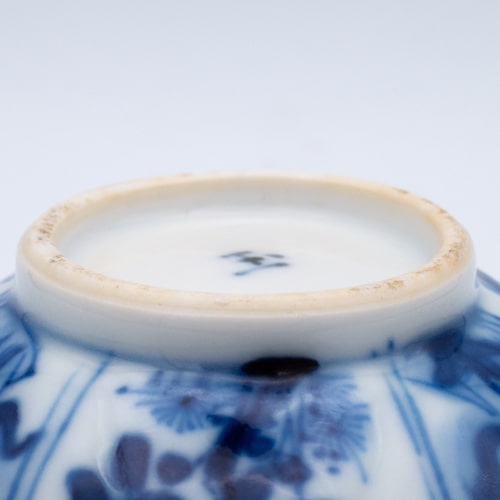
Kangxi period (1661-1722) miniature teapot decorated in popular ‘Long Eliza’ (Lange Lijsen) pattern and with underglaze blue 玉 ‘Yu’ (jade) character mark.
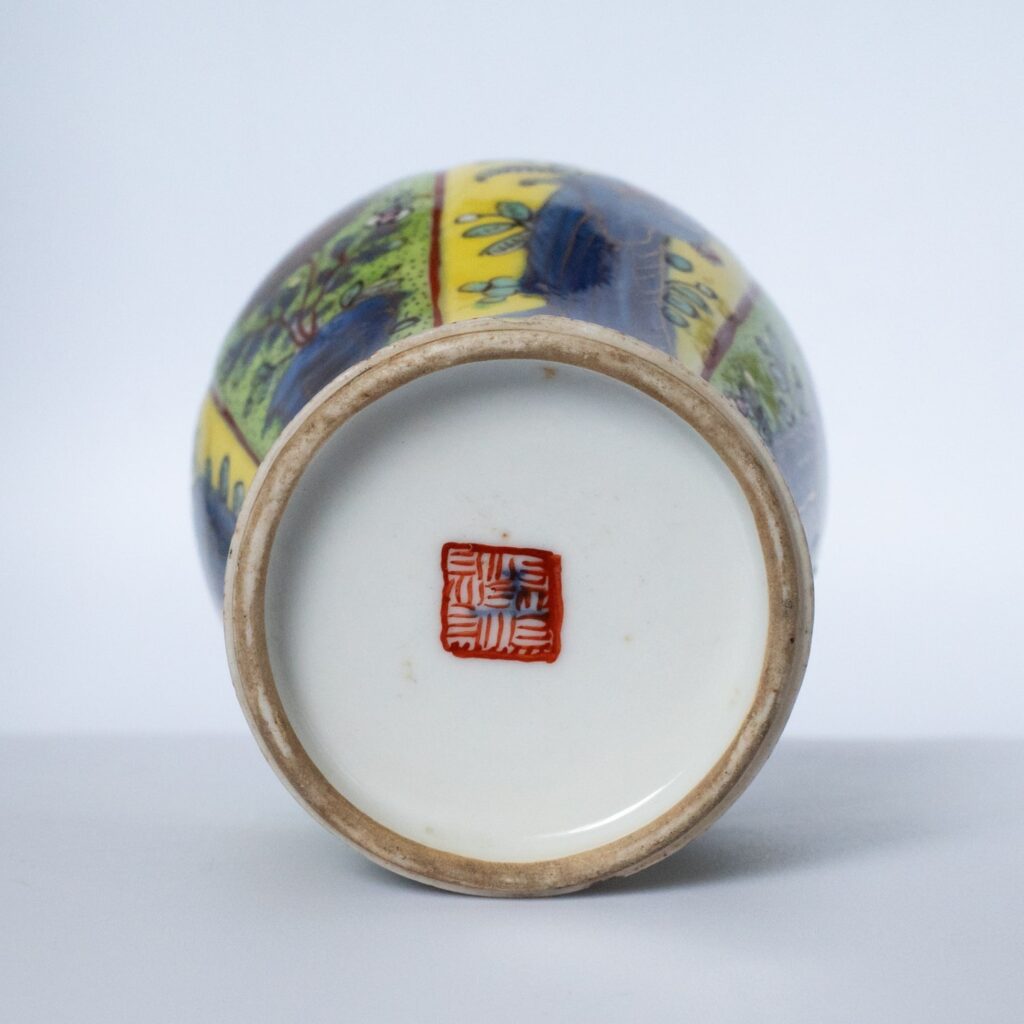
Kangxi period ‘Long Eliza’ vase with later European decoration and pseudo-Chinese iron red mark painted over original underglaze blue ‘Yu’ mark, early 18th century.
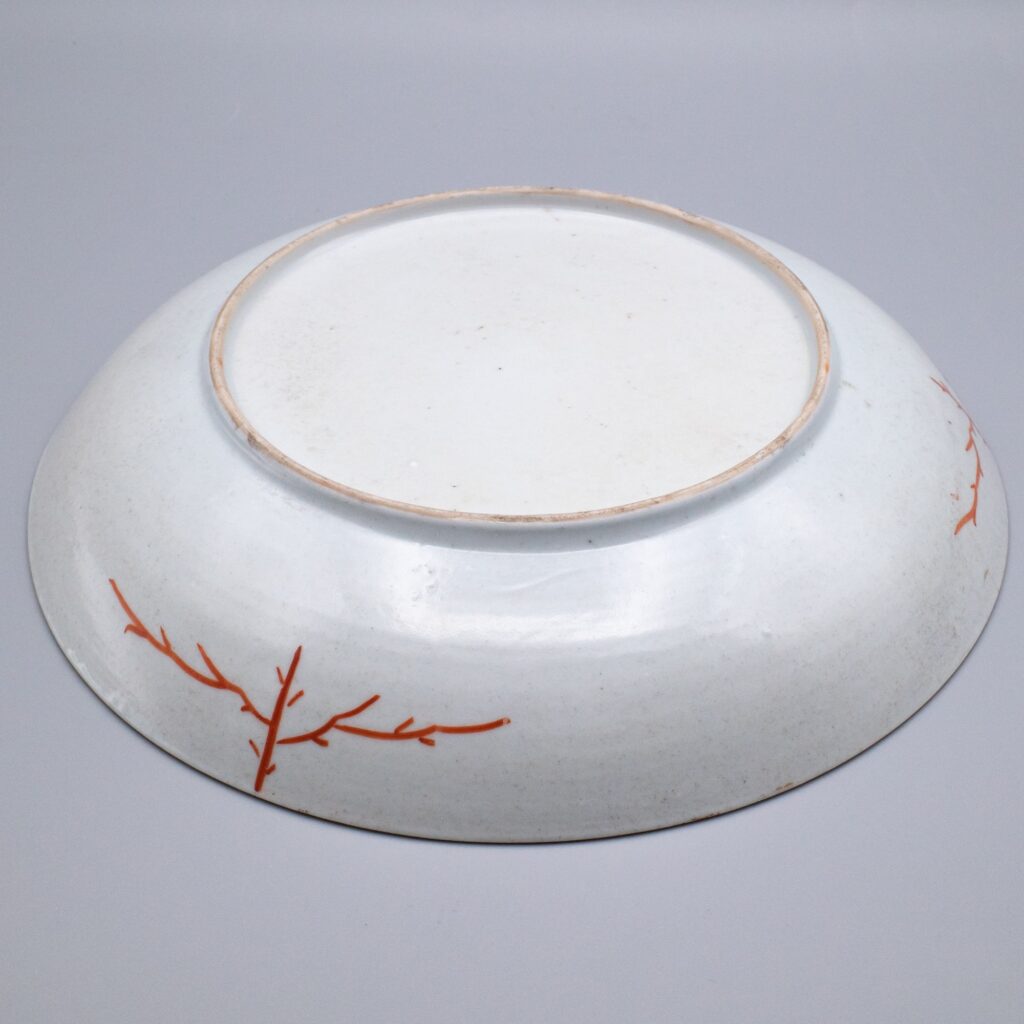
Kangxi period anhua decorated porcelain dish with later European ‘Amsterdam bont’ overglaze decoration, early 18th century.
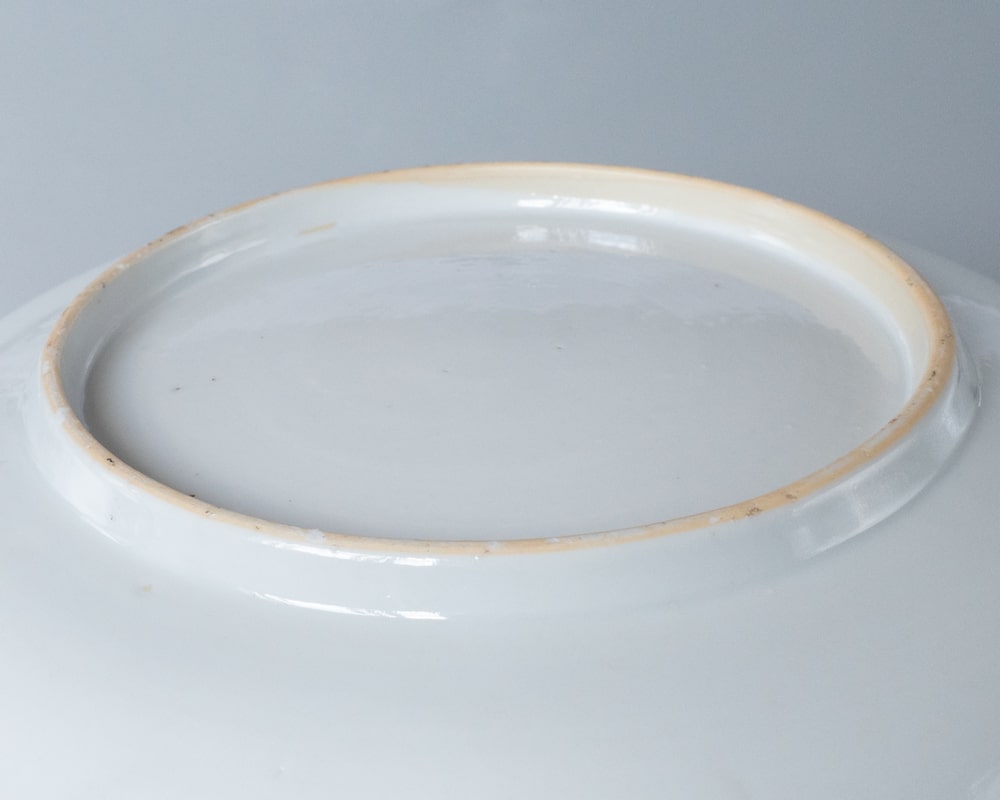
Foot rim of a similar Kangxi period porcelain deep dish, this time with Dutch Kakiemon style ‘Old Lady’ pattern featuring figures listening to a nightingale. Early 18th century.
Qing Dynasty – Qianlong Period (1735-1796)

A Qianlong period punch bowl decorated with underglaze blue and overglaze famille rose enamels, later 18th century.
Qing Dynasty – Early 19th Century
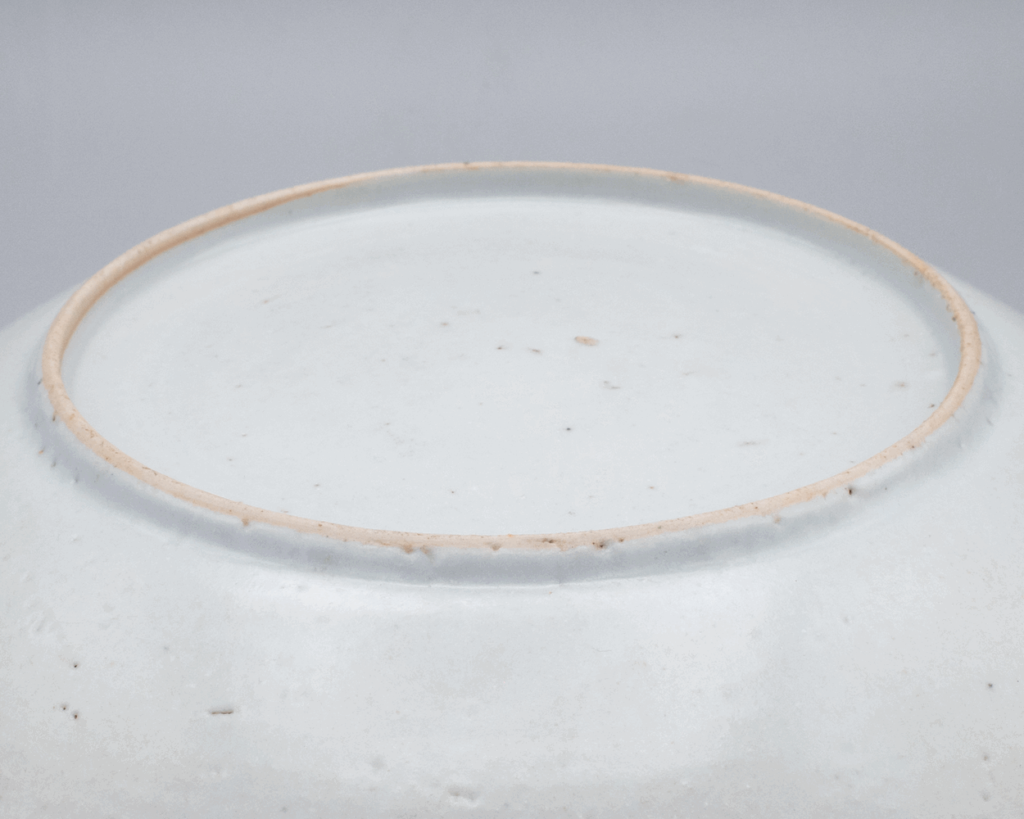
Late 18th – early 19th century, c. Jiaqing period export porcelain dish made for the Persian/Islamic market.
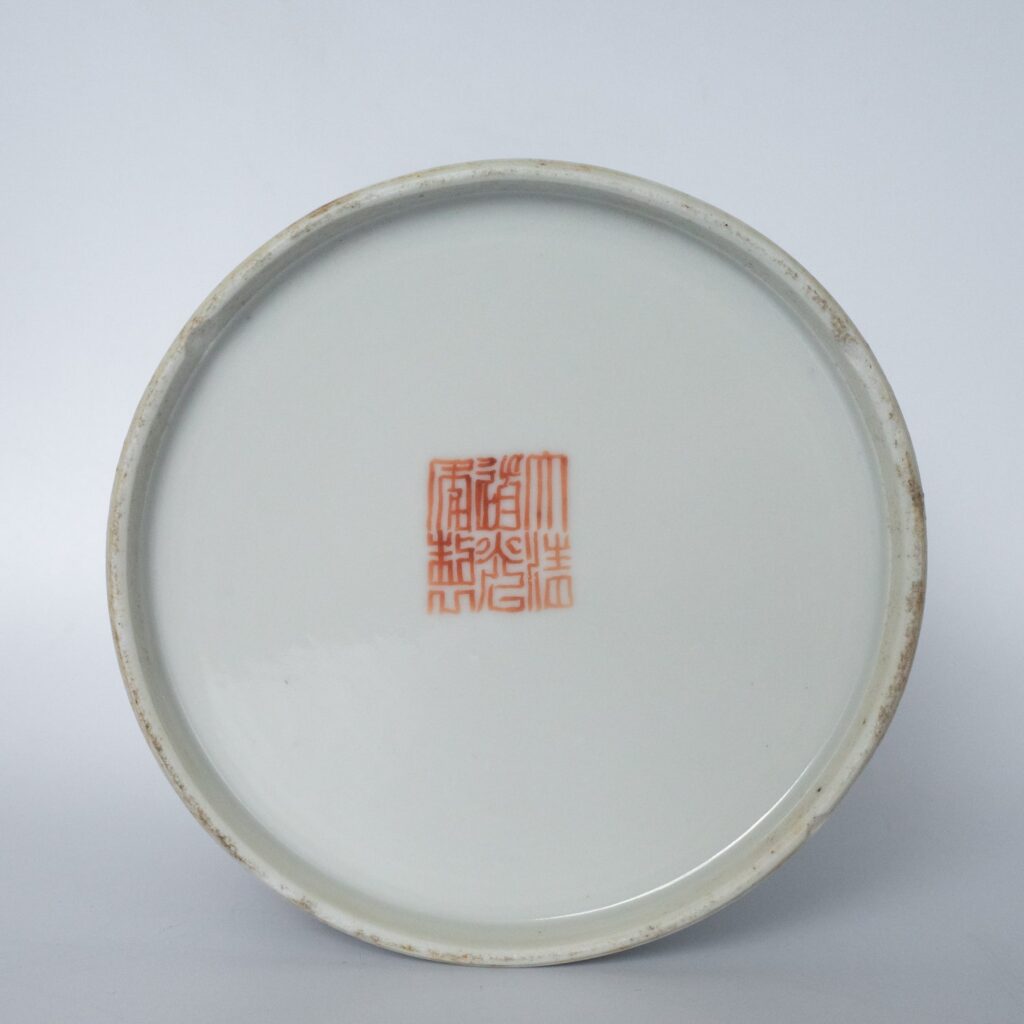
Famille rose ‘Wu Shuang Pu’ decorated round covered pot with six-character Daoguang seal mark, early 19th century.
Later Qing Dynasty – 19th/Early 20th Centry
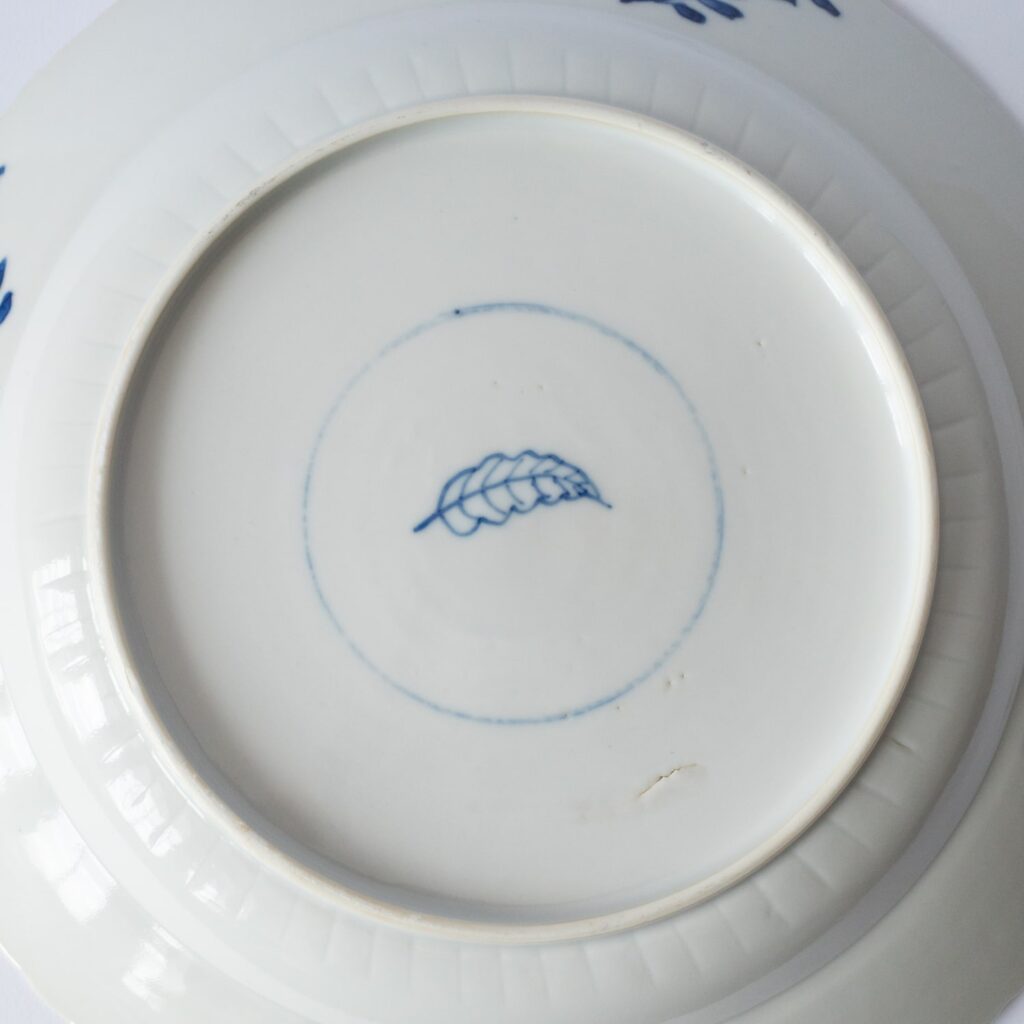
A Kangxi revival blue and white porcelain dish with Kangxi style underglaze blue artemisia leaf mark inside a single ring, late 19th or 20th century.
Republic Period (1912-1949)
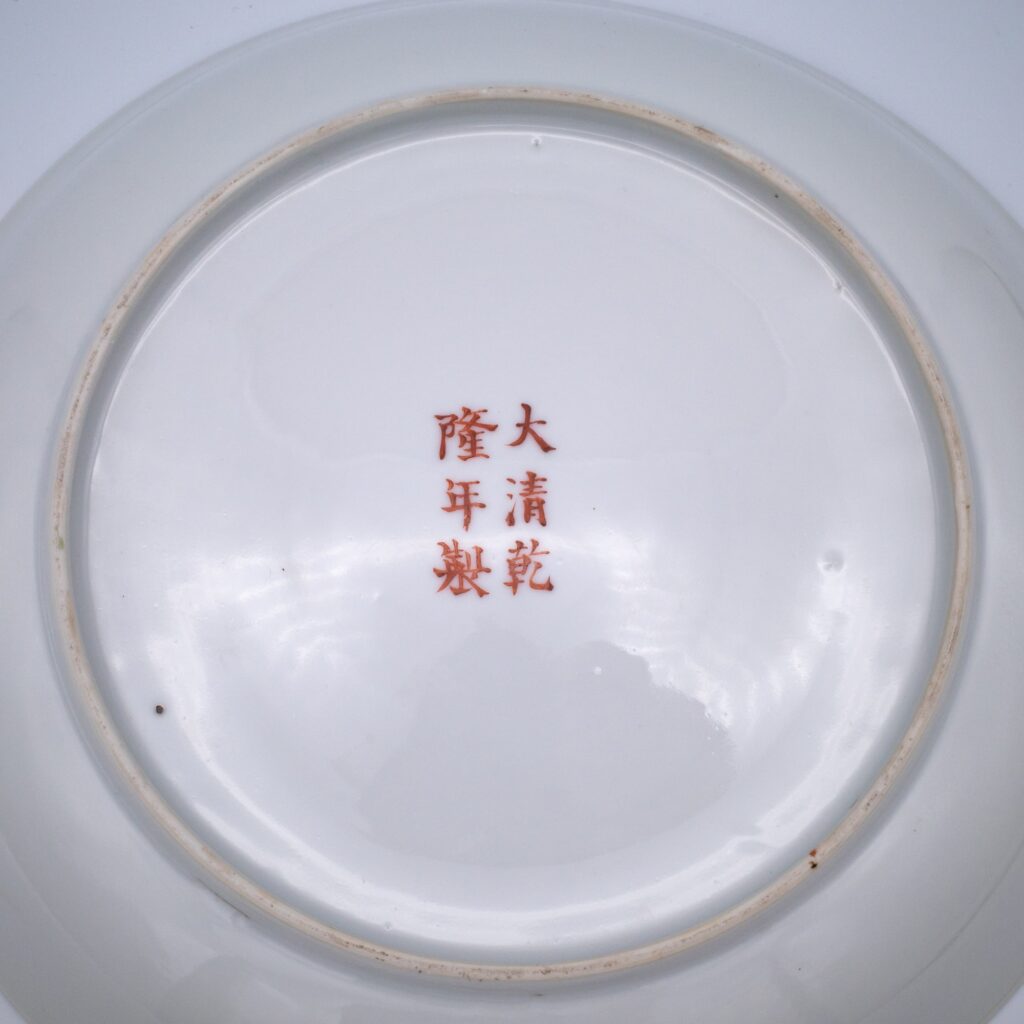
Famille rose decorated dragon and fenghuang dish with hand-painted iron red Qianlong mark, Guangxu-Republic period.
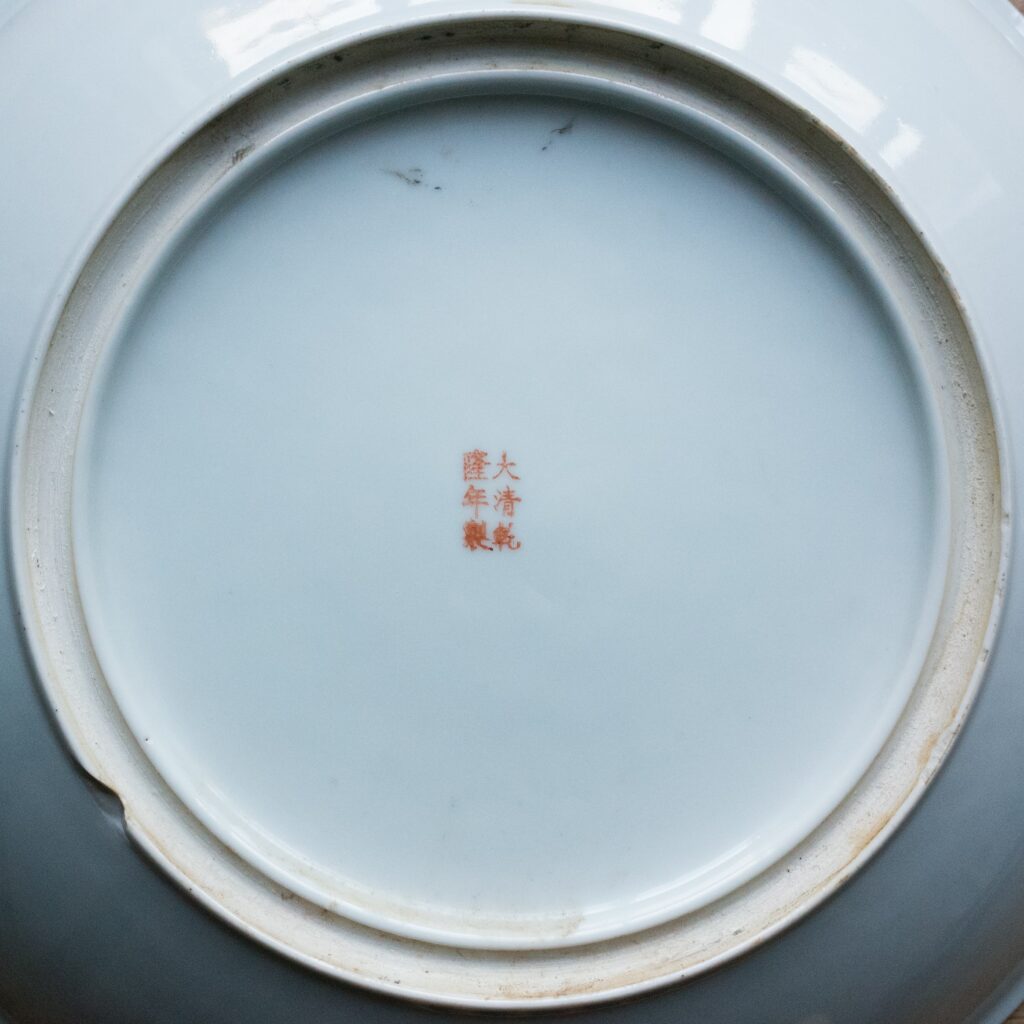
Famille rose decorated charger with foo lions, stamped six-character Qianlong mark and Kangxi-style groove foot rim, Republic period.
People’s Republic of China (PRoC) – post-1949
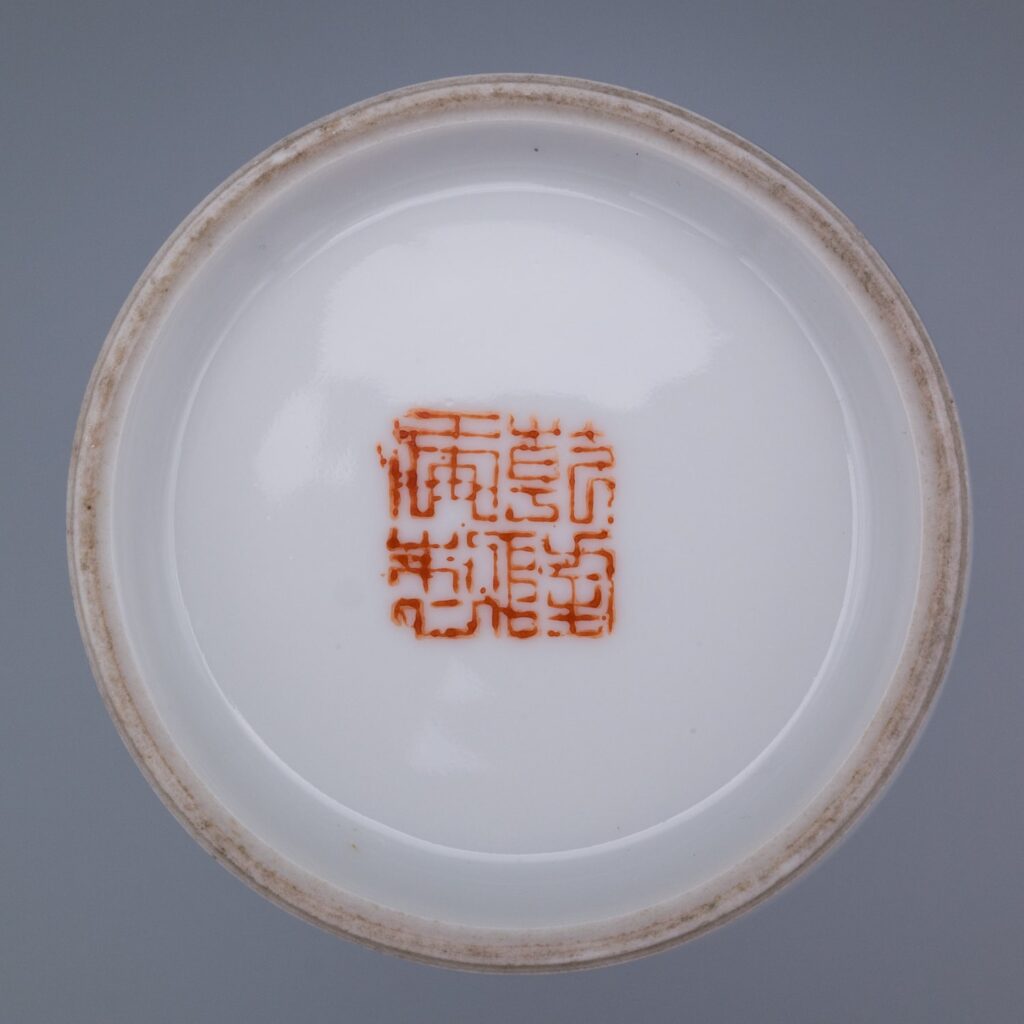
Late Republic – early PRoC famille rose decorated vase with stamped four-character Qianlong seal mark.
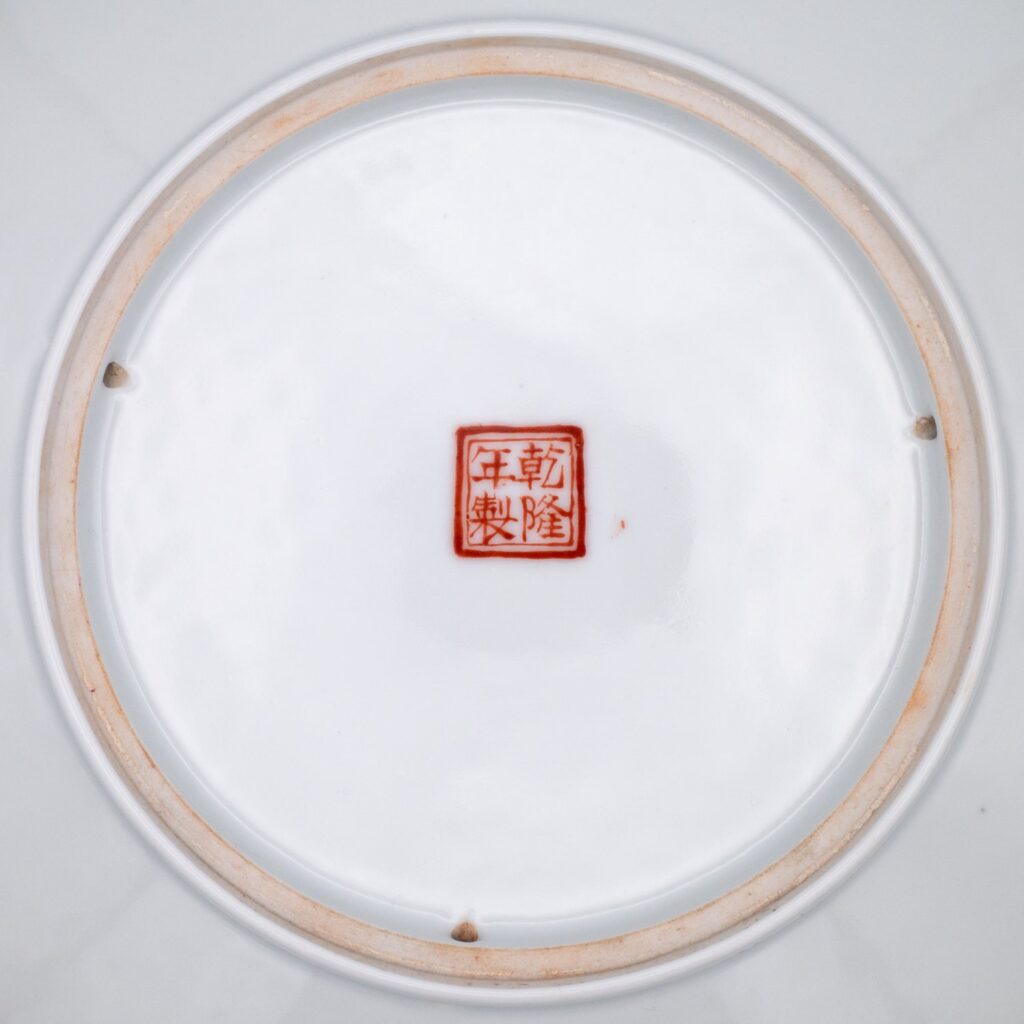
Early PRoC famille rose decorated wall plate with maidens in the garden and hand-painted four-character Qianlong mark.
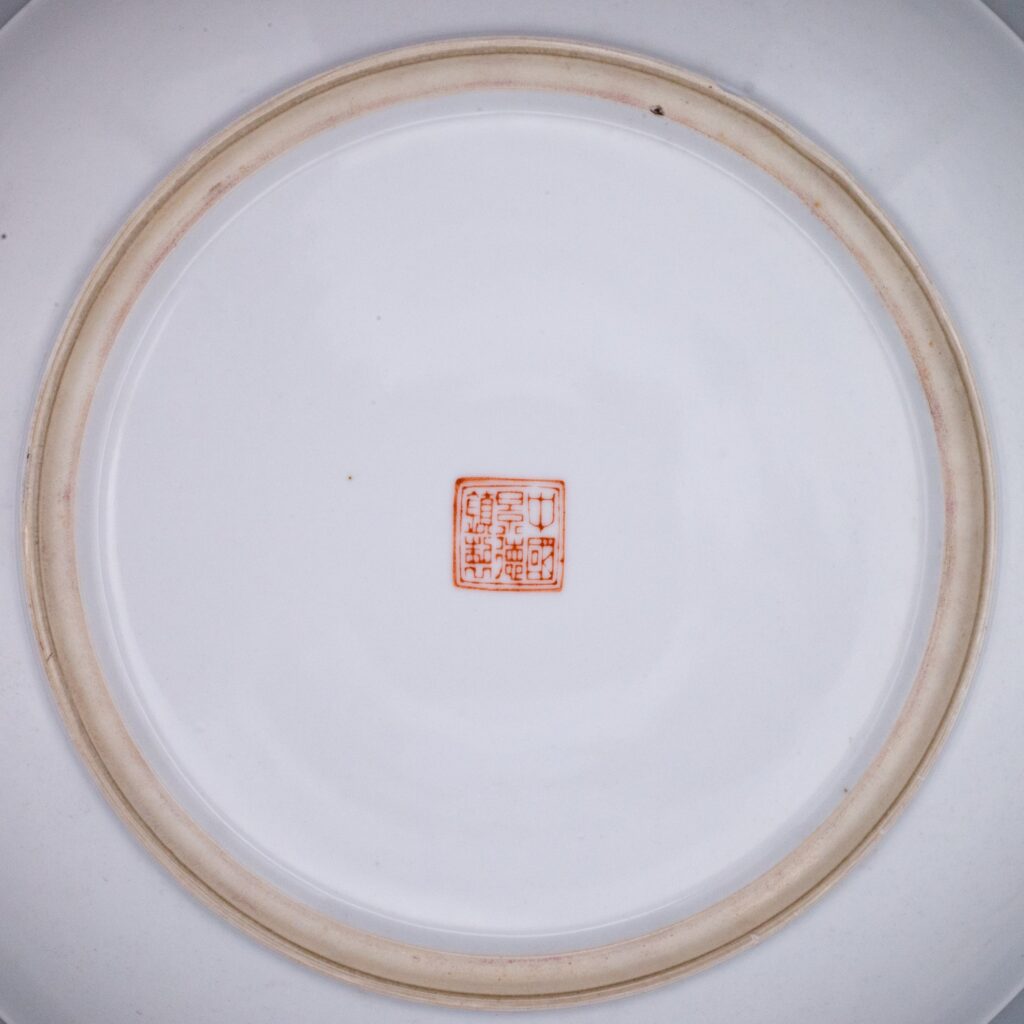
A 20th century famille rose decorated porcelain charger with bats and peaches. Stamped with a six-character China, Jingdezhen mark.
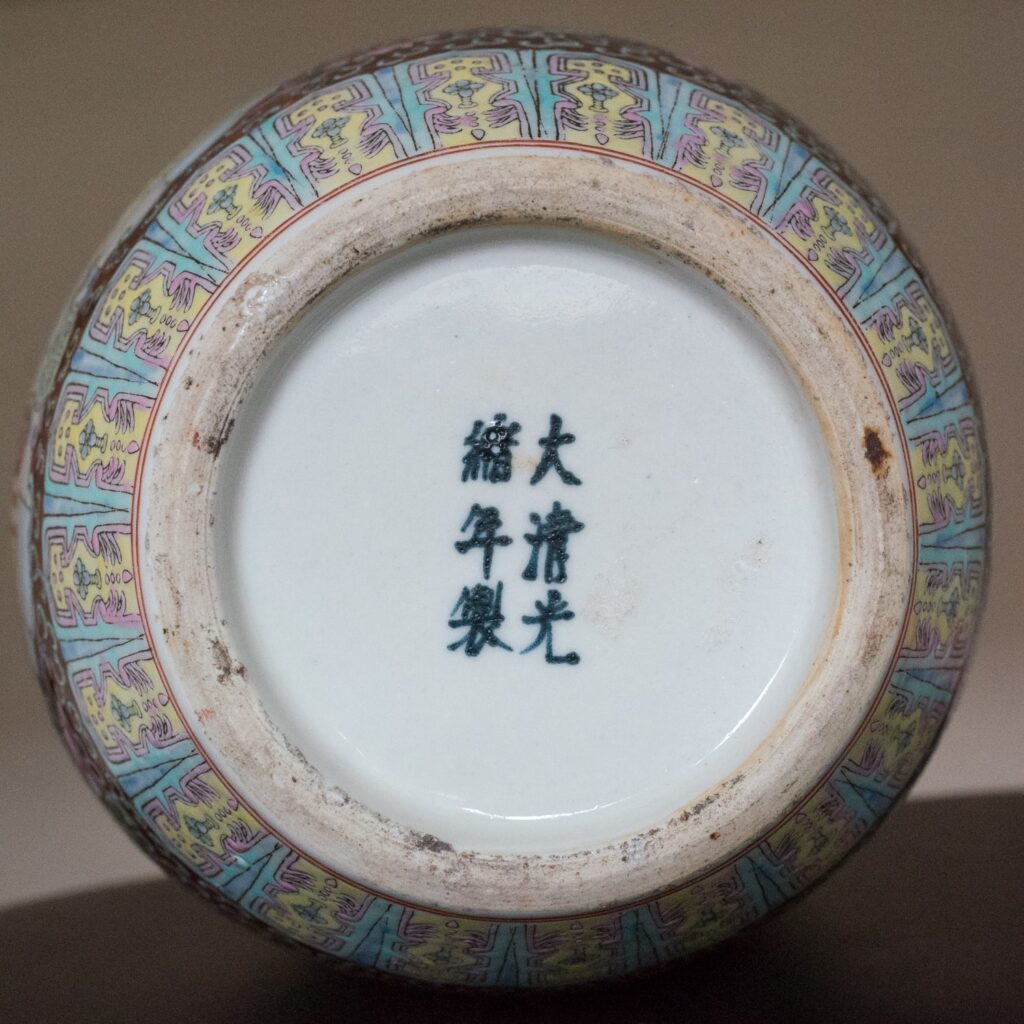
Partially transfer-printed PRoC famille rose decorated bottle vase with figural scenes and six-character Guangxu reign mark.
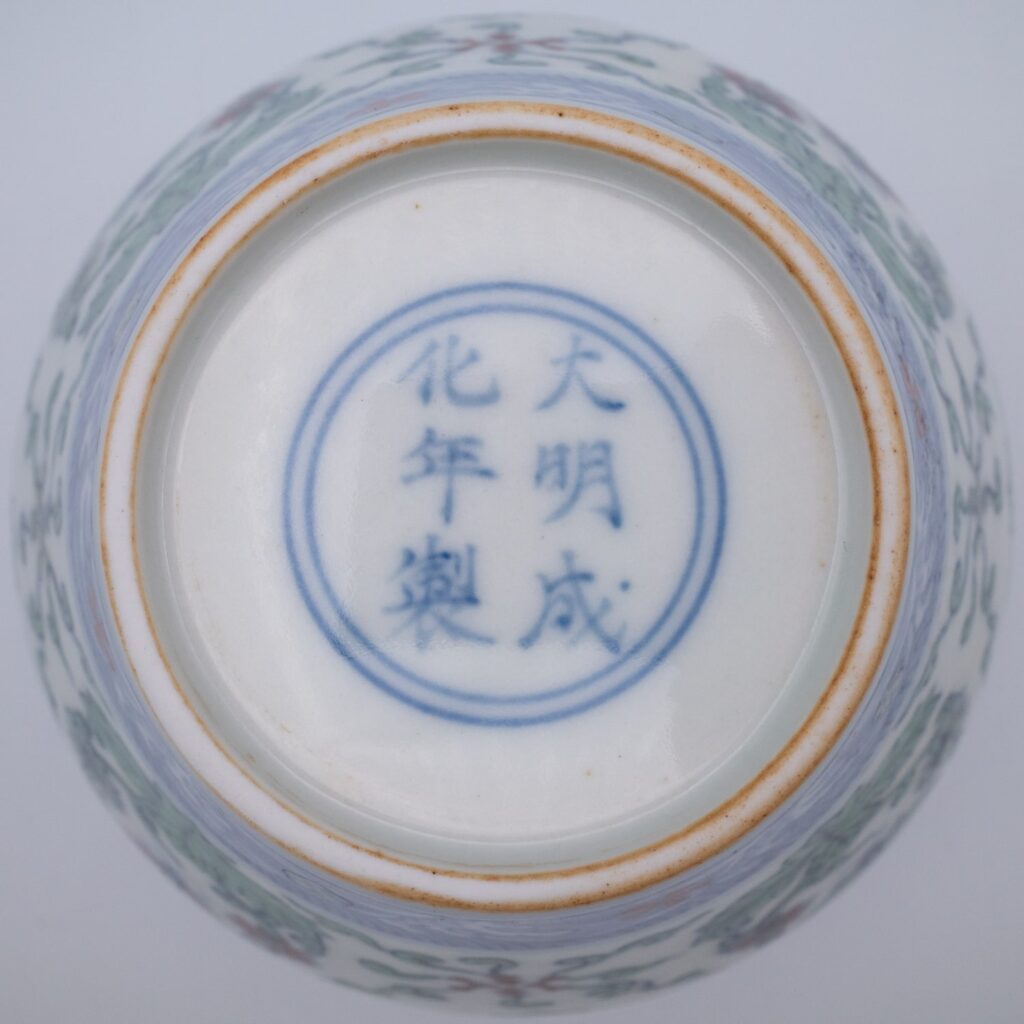
Later 20th century doucai jar with a six-character underglaze blue Chenghua reign mark inside double circles.
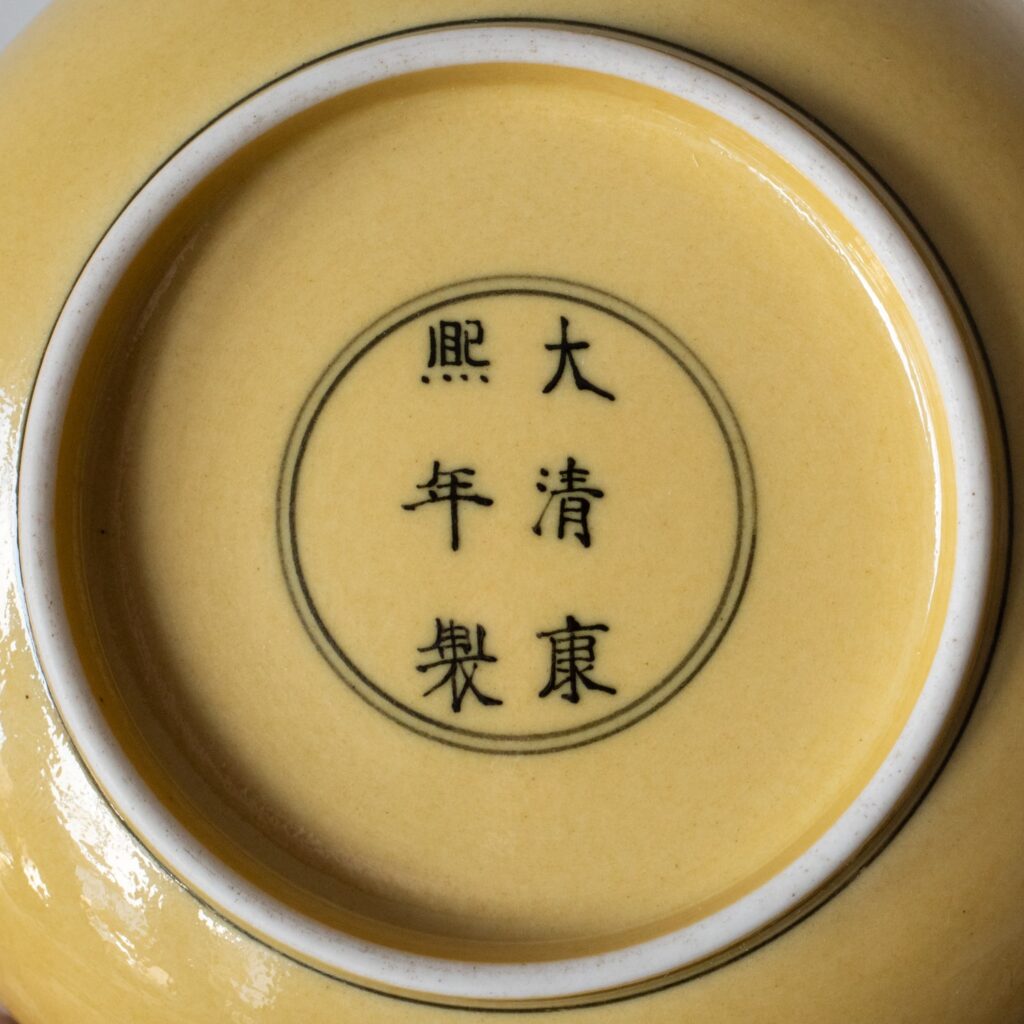
Later 20th century yellow-ground saucer with a pair of dragons. Marked with a six-character underglaze Kangxi reign mark inside double circles.
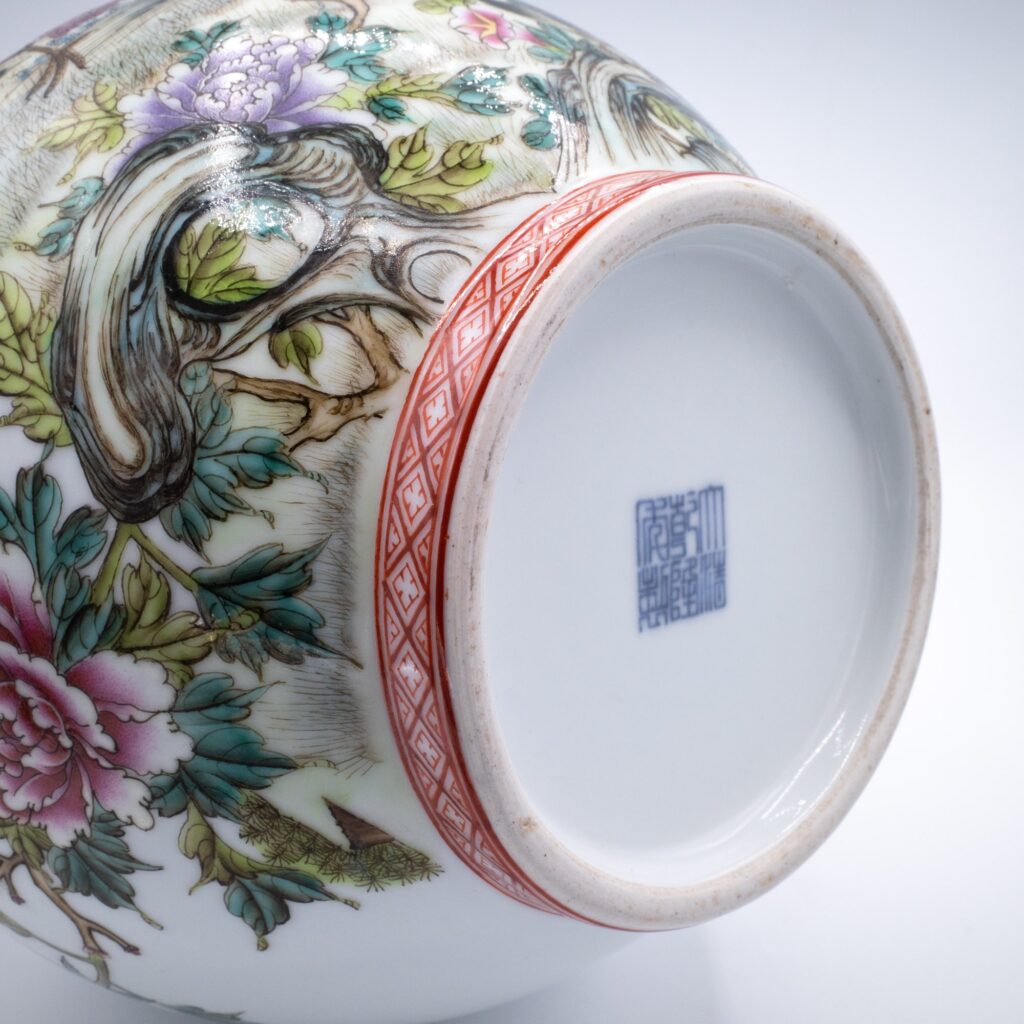
Later 20th century famille rose decorated vase with underglaze blue six-character Qianlong seal mark.
Need more help?




